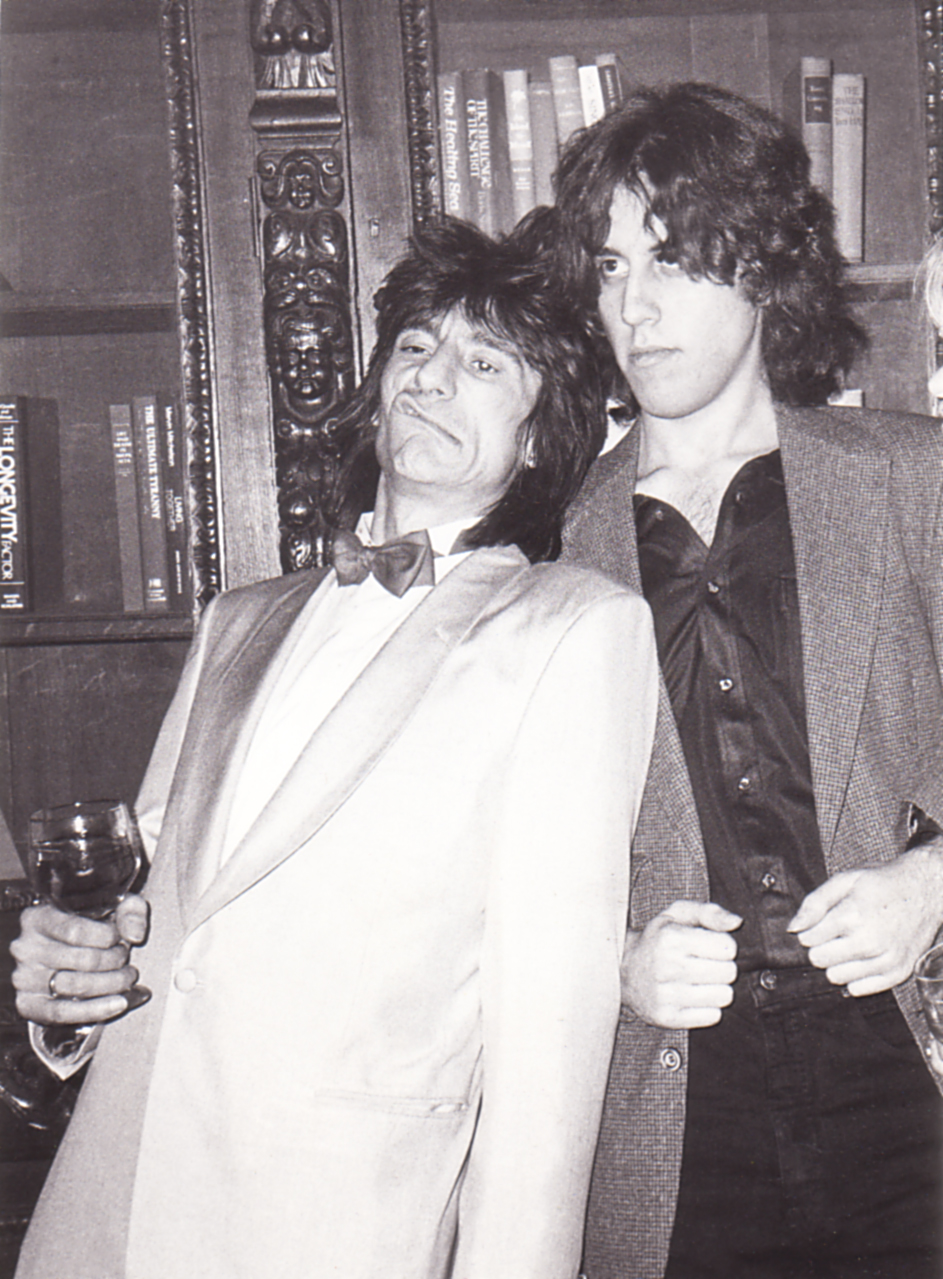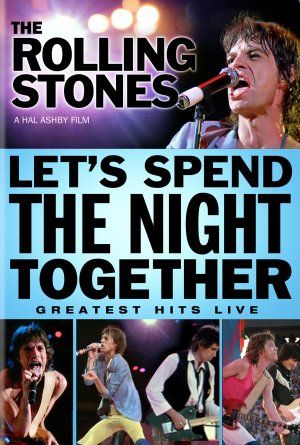Tell Me :
Talk
I can't believe it. I heard that song on the radio many years ago and really liked it and tried to find it but gave up. Thanks
Keith was always ridiculous with his obsession with looking like the cigarette smoking tough guy. I hated guys like that in High School and I still do. I could not imagine wanting that ridiculous image.
You're welcome. I'm enjoying "People Who Died" too. I never knew the song until recently.
The Jim Carroll Band "People Who Died"
[www.youtube.com]
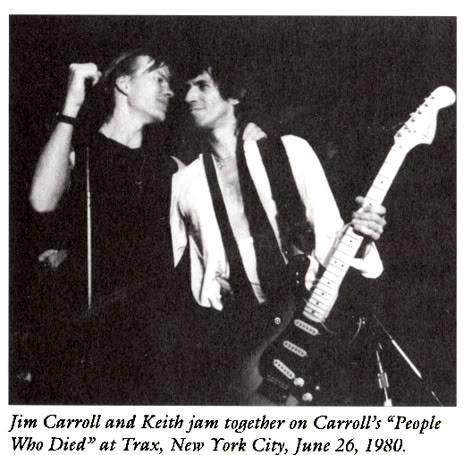
"People Who Died" was a perfect song for Keith to play with Jim Carroll live. I can see why any
Rolling Stones fan would love the music of "People Who Died." It's great Rock-n-Roll.
If art can stir your emotions than it has done it's job. This song made me feel sad for Jim Carroll talking about
his friends, especially Eddie. Again at 3:45
Jim's heartfelt true-life cry, "I miss'm. They were friends of mine!"
I can see why Keith Liked Jim Carroll and signed him to Rolling Stones Records. The album "Catholic Boy" never
did get released on Rolling Stones Records.
I found more info and photos of Keith and Jim Carroll. I'm trying to hunt down the 2nd edition (1980) of the book
"Basketball Diaries" with the "Catholic Boy" album advertisement on "Rolling Stones Records."
Edited 1 time(s). Last edit at 2017-12-05 08:59 by exilestones.
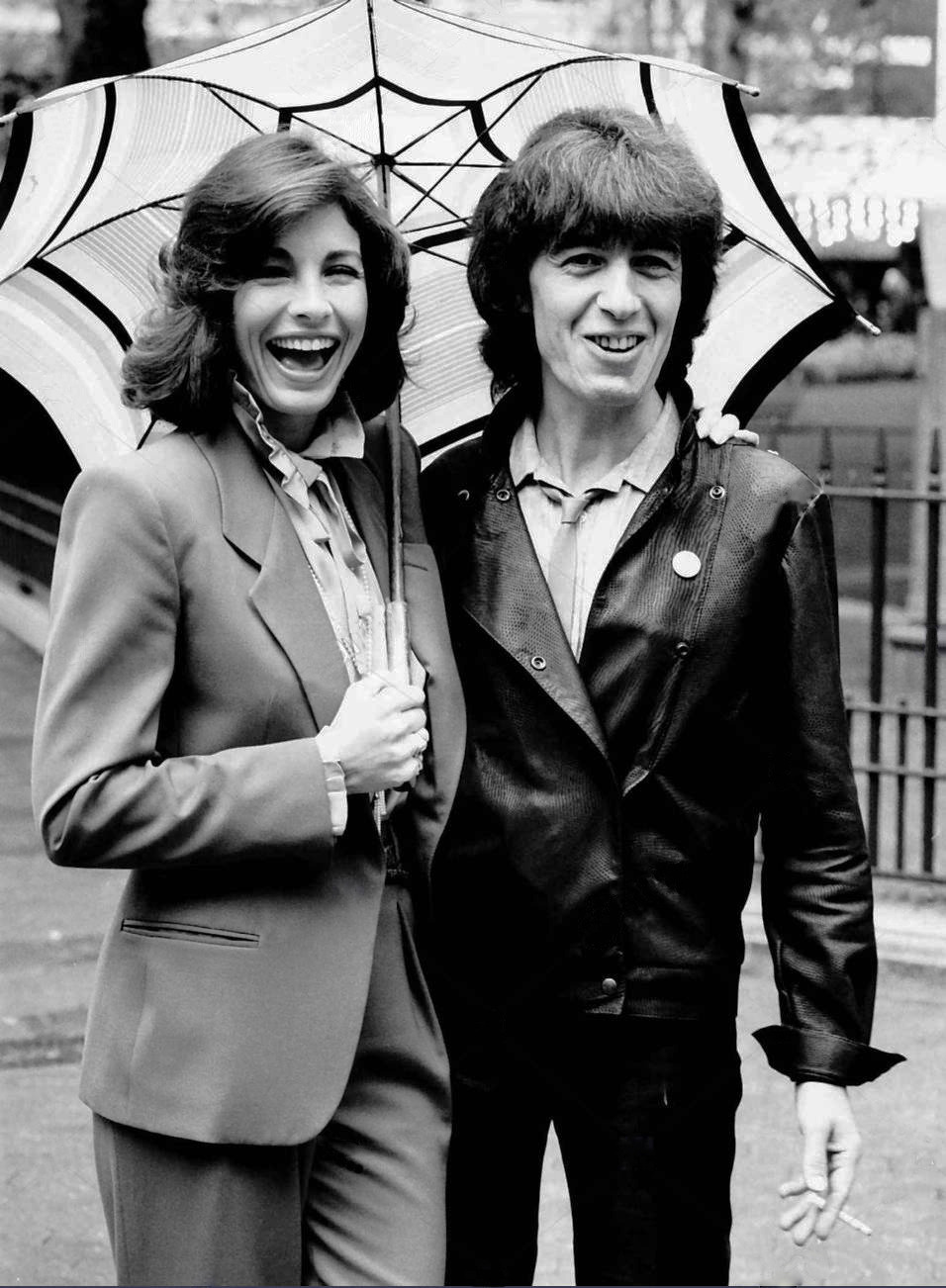
Anne Archer & Bill Wyman, May 1981
Edited 1 time(s). Last edit at 2017-12-06 20:52 by exilestones.

Jerry Hall, Mick Jagger, Keith Richards and Whitney Tower Jr. at Jerry's Birthday July 3, 1980
That’s my photo of Lil Wergilis and Keith from 1981. Lil and Keith are still friends, and she is also friends with Marlon and Angela on social media. I found a bunch of old modeling photos of her a few years ago, and we corresponded for a bit. She’s a little tired-looking nowadays. Hasn’t aged badly, but hasn’t aged well either.

Keith & Patti in 1982
photo by Jane Rose
Thanks for sharing your photo. It turned-out great!
That must have been very cool. I was excited when I found my ugly mug in a Stones concert photo.

Jerry Hall and Mick Jagger during studio recording at music producer Chris Blackwell's home in Jamaica. Mick pulled the panties off the model but she doesn't seem to mind.
Which is not true, of course. It, and Heaven, were recorded for EMOTIONAL RESCUE in 1979.
Thanks for the info and thanks for not posting the whole post!
If there was a way to shrink some of these pictures that turn out huge when posting them I would've done that as well! Quoting the whole thing, yeah, too much. Just get to the point!
Usually I search Google for the image to see if I can find just the right size.

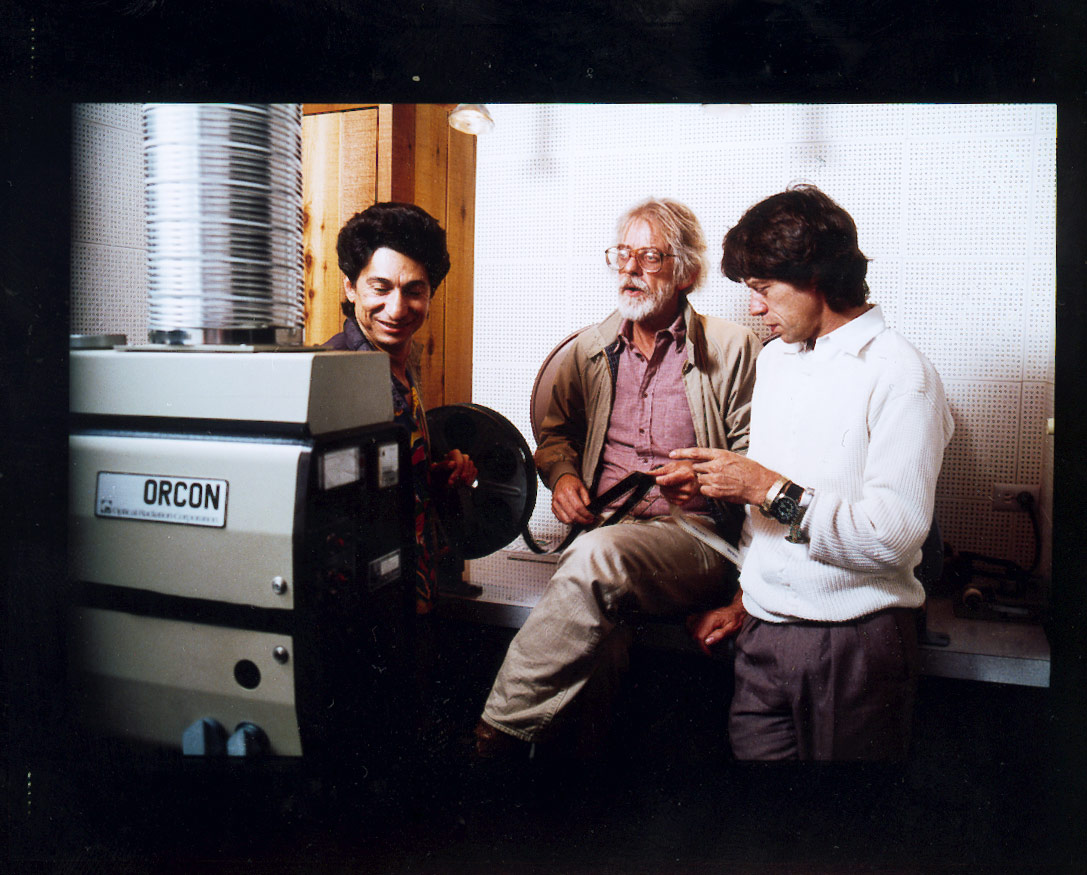
Pablo, Hal, Mick - Pablo Ferro produced the time-lapse photography sequences in the Let’s Spend the Night Together movie.
VIDEO: Going to a Go Go time lapse
[www.youtube.com]

Most likely because they are all hand soldered, and the thinner wire works easier.
Mathijs
Talk about your favorite band.
For information about how to use this forum please check out forum help and policies.
Re: Stones 1981-1982 Wardrobes
Posted by:
exilestones
()
Date: December 3, 2017 07:10
COLONGE 1ST
photos by Grison
1
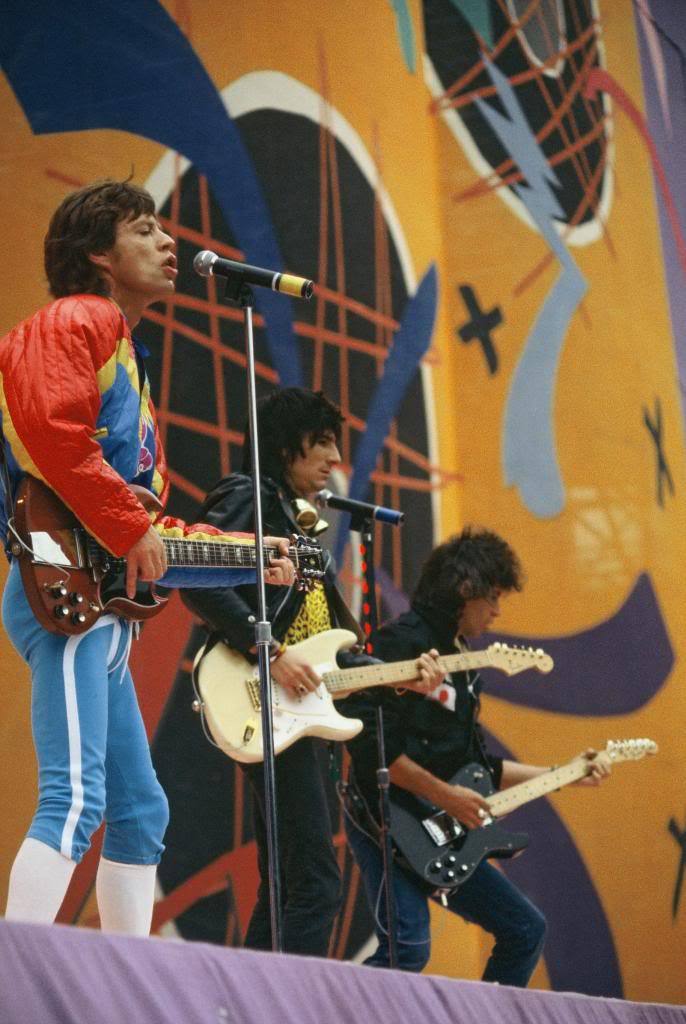
.
photos by Grison
Re: Stones 1981-1982 Wardrobes
Posted by:
tomk
()
Date: December 3, 2017 07:58
Always wondered why they had the really thin guitar cables for the wireless.
Re: Stones 1981-1982 Wardrobes
Posted by:
stanlove
()
Date: December 3, 2017 17:10
Quote
exilestonesJim Carroll, Poet and Punk Rocker Wrote ‘The Basketball Diaries.’Keith jams with Jim Carroll Band on "People Who Died."
The Jim Carroll Band "People Who Died"
[www.youtube.com]
Artist: The Jim Carroll Band
Album: Catholic Boy
Released: 1980
Lyrics
Teddy sniffing glue he was 12 years old
Fell from the roof on East Two-nine
Cathy was 11 when she pulled the plug
On 26 reds and a bottle of wine
Bobby got leukemia, 14 years old
He looked like 65 when he died
He was a friend of mine
Those are people who died, died
Those are people who died, died
Those are people who died, died
Those are people who died, died
They were all my friends, and they died
G-berg and Georgie let their gimmicks go rotten
So they died of hepatitis in upper Manhattan
Sly in Vietnam took a bullet in the head
Bobby OD'd on Drano on the night that he was wed
They were two more friends of mine
Two more friends that died / I miss 'em--they died
Those are people who died, died
Those are people who died, died
Those are people who died, died
Those are people who died, died
They were all my friends, and they died
Mary took a dry dive from a hotel room
Bobby hung himself from a cell in the tombs
Judy jumped in front of a subway train
Eddie got slit in the jugular vein
And Eddie, I miss you more than all the others,
And I salute you brother/ This song is for you my brother
Those are people who died, died
Those are people who died, died
Those are people who died, died
Those are people who died, died
They were all my friends, and they died
Herbie pushed Tony from the Boys' Club roof
Tony thought that his rage was just some goof
But Herbie sure gave Tony some bitchen proof
"Hey, " Herbie said, "Tony, can you fly?"
But Tony couldn't fly, Tony died
Those are people who died, died
Those are people who died, died
Those are people who died, died
Those are people who died, died
They were all my friends, and they died
Brian got busted on a narco rap
He beat the rap by rattin' on some bikers
He said, hey, I know it's dangerous,
But it sure beats Riker's
But the next day he got offed
By the very same bikers
Those are people who died, died
Those are people who died, died
Those are people who died, died
Those are people who died, died
They were all my friends, and they died
Songwriters: Brian Ladd Linsley / Jim Dennis Carroll / Steve Linsley / Terrell Winn / Wayne Woods
People Who Died lyrics © Len Freedman Music Inc.
The Basketball Diaries Movie
VIDEO TRAILER: [www.youtube.com]
Basketball Diaries - the story of Jim Carroll, a New York Legend
Rolling Stones songs are in the movie soundtrack
VIDEO FULL MOVIE: [www.youtube.com]
Jim Carroll's Basketball Diaries Blamed for School Shooting: [www.youtube.com]
It's Too Late - The Jim Carroll Band
[www.youtube.com]
I can't believe it. I heard that song on the radio many years ago and really liked it and tried to find it but gave up. Thanks
Re: Stones 1981-1982 Wardrobes
Posted by:
stanlove
()
Date: December 3, 2017 17:19
Quote
exilestones
photos by Lynn Goldsmith 1981
Keith was always ridiculous with his obsession with looking like the cigarette smoking tough guy. I hated guys like that in High School and I still do. I could not imagine wanting that ridiculous image.
Re: Stones 1981-1982 Wardrobes
Posted by:
exilestones
()
Date: December 4, 2017 17:30
Quote
stanlove
I can't believe it. I heard that song on the radio many years ago and really liked it and tried to find it but gave up. Thanks
You're welcome. I'm enjoying "People Who Died" too. I never knew the song until recently.
The Jim Carroll Band "People Who Died"
[www.youtube.com]

"People Who Died" was a perfect song for Keith to play with Jim Carroll live. I can see why any
Rolling Stones fan would love the music of "People Who Died." It's great Rock-n-Roll.
If art can stir your emotions than it has done it's job. This song made me feel sad for Jim Carroll talking about
his friends, especially Eddie. Again at 3:45
Jim's heartfelt true-life cry, "I miss'm. They were friends of mine!"
I can see why Keith Liked Jim Carroll and signed him to Rolling Stones Records. The album "Catholic Boy" never
did get released on Rolling Stones Records.
I found more info and photos of Keith and Jim Carroll. I'm trying to hunt down the 2nd edition (1980) of the book
"Basketball Diaries" with the "Catholic Boy" album advertisement on "Rolling Stones Records."
Edited 1 time(s). Last edit at 2017-12-05 08:59 by exilestones.
Re: Stones 1981-1982 Wardrobes
Posted by:
exilestones
()
Date: December 5, 2017 18:45

Anne Archer & Bill Wyman, May 1981
Edited 1 time(s). Last edit at 2017-12-06 20:52 by exilestones.
Re: Stones 1981-1982 Wardrobes
Posted by:
exilestones
()
Date: December 7, 2017 17:34
HANOVER
Hanover June 6, 1982
photos by Udo Weger
Edited 2 time(s). Last edit at 2017-12-07 17:43 by exilestones.

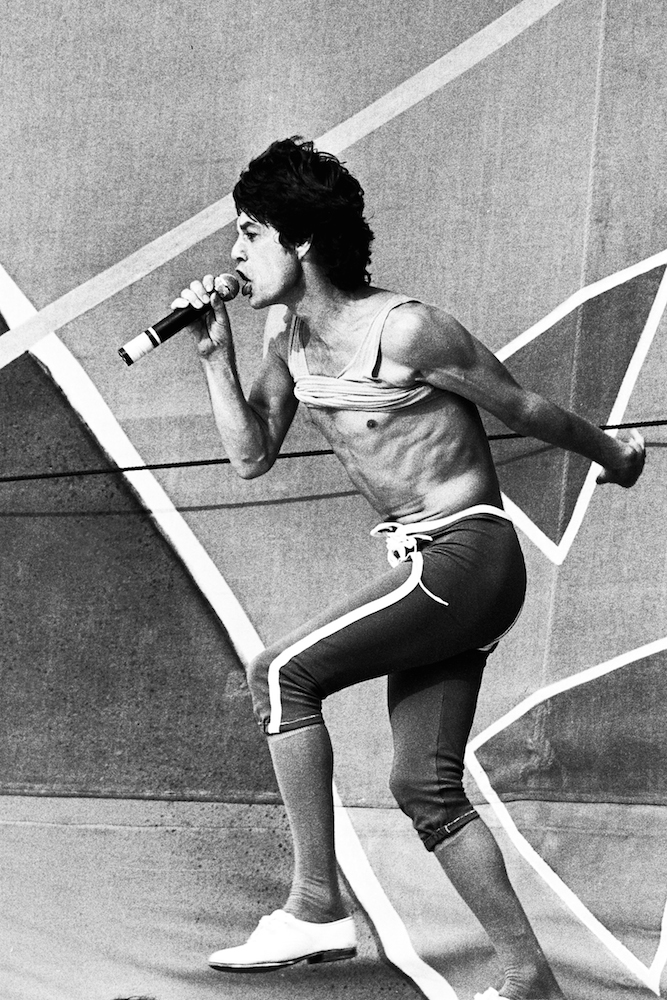
Hanover June 6, 1982
photos by Udo Weger
Edited 2 time(s). Last edit at 2017-12-07 17:43 by exilestones.
Re: Stones 1981-1982 Wardrobes
Posted by:
exilestones
()
Date: December 9, 2017 18:41

Jerry Hall, Mick Jagger, Keith Richards and Whitney Tower Jr. at Jerry's Birthday July 3, 1980
Re: Stones 1981-1982 Wardrobes
Posted by:
Shawn20
()
Date: December 9, 2017 20:50
I actually found myself in the Orlando photo in the top right corner. WOW! Great memories indeed!
Re: Stones 1981-1982 Wardrobes
Posted by:
gypsy18
()
Date: December 10, 2017 02:19
Quote
exilestones
NEW YORK CITY
Update with Bill German
Lil Wenglass Green & Keith Richards – 1981
More of Keith and Lil Wenglass (1978-1981): [groupieblog.wordpress.com]
I wrote to Bill German and asked him if he was in the above photo. He wrote,
"As much as that guy in the background resembles me, and as much as that seems
like the exact type of situation I'd have been in back then (especially if it
was taken at the Ritz nightclub in NYC), I'm 90% certain it isn't actually me.
Same hair, same height, but I must've had a doppelganger.
It does appear to be the Ritz, which is a place Keith visited often. (Now I'm
trying to remember what the upstairs wallpaper looked like!) However, if it's
Lil he's with (meaning, the pre-Patti era), then I have my doubts, as the Ritz
didn't open till May 1980.
I'm pretty certain that the guy applauding nearby (wearing the wristwatch) is
the late Larry Sessler (son of Freddy). But right now, that's the most
definitive thing I can offer about this photo.
I wish I had more to tell you about it. I'll put my thinking cap on and,
maybe, after some Sherlock Holmes deductive reasoning, I can come up with
something more.
Till then, all the best.
Bill"
In a second email Bill German wrote, "it's definitely plausible that Keith
and Lil remained friends, even after he began seeing Patti. (In fact, I'm
pretty sure they did.) So, if someone says it was taken in 1981, I'll go back
to my original hunch and say it's the Ritz. I can't pinpoint the exact date
just from looking at the photo, but, if I search through some of my old
Beggars Banquet issues from the time, I can probably narrow it down.
Keep up the good work!
Bill"
Bill wrote, "The new photo you sent me (above) is an easy one. Based on the look of the table (no
joke!) and on what Keith is wearing, I'm 99.9% certain that it was taken on
6/26/80 at Trax, during the Jim Carrroll show (where Keith got up to jam on
the song "People Who Died").
To the left of the photo, you can see half of
Freddy Sessler's smiling face, and the guy with the beard & glasses is Stones
PR man Paul Wasserman. That might be Jane Rose seated next to Keith, but,
with the bottle blocking her face, it's hard to tell. Love Patti in this one!
(And fyi: Keith spent some time with Anita Pallenberg at this show.)
As for the first photo you sent me (top photo), yes, it's definitely plausible that Keith
and Lil remained friends, even after he began seeing Patti. (In fact, I'm
pretty sure they did.) So, if someone says it was taken in 1981, I'll go back
to my original hunch and say it's the Ritz. I can't pinpoint the exact date
just from looking at the photo, but, if I search through some of my old
Beggars Banquet issues from the time, I can probably narrow it down.
Keep up the good work!
Bill
++++++++
"Hilarious and sometimes heartbreaking." -- Rolling Stone magazine
"Memorable details from the [Stones'] inner sanctum." -- The New York Times
"[German's] proximity to the band makes this an essential Stones book, while his engaging writing style will appeal to non-fanatics as well." -- Newark Star-Ledger
"This book is absolutely great ... possibly the best book I've read about the Rolling Stones." -- Andrew Loog Oldham
"Impossible to put down ... filled with priceless, often laugh-out-loud anecdotes. Under Their Thumb is a cautionary tale, but a hugely entertaining one." -- Montreal Gazette
Bill German and The Rolling Stones guitarist, Ronnie Wood
+++++++
For Rolling Stones fans who aren't familiar with Bill German, he is a big time Rolling Stones fan
who started as a kid in high school writing about his favorite band the "Rolling Stones." Eventually he
made many friends from James Karnbach to Keith Richards and his fanzine "Beggars Banquet" became the
official fanzine of the Rolling Stones which if I
remember correctly was advertised in an official Rolling Stones album.
Bill German was inside the Stones camp during the Tattoo You Era
I remember that I couldn't get enough of Bill's Beggar's Banquet! It would come to my post office box and everything
would stop until I finished reading Beggars Banquet fanzine until the end. Then I'd go home and read it again! Bill
always had the inside scoop.
Here's a guy who was in Mick's place, hung out with Ron and Keith and was welcomed to many Stones and solo events.
He earned his way and worked hard. It wasn't all glory and parties.
The one thing that stuck-out in my mind and I know to be true from when I covered the Stones was, no matter how
connected someone was and what job they were doing, they had the work hard to
get the info and the invites. You'd think the Stones would notify their official fanzine?
Bill German wrote a book that was even more fascinating than his great fanzine, called "Under Their Thumb." I'm not
much of a book reader but like Bill's fanzine, I couldn't put it down! People would say, Are you ever going to put
that book down?" Then I'd read some thing laugh or say, "Unbelievable, oh my goodness!"
I called my Stones friends who seemed interested in the book but didn't seem as enthusiastic as I was about "Under Their Thumb."
Then they started to read it. The phone calls poured in, "How about the part where Mick said to Bill,,,,"
You got to get this book and imagine that you are in Bill's shoes or along for the adventure!
ExileStones
Here's Keith in New York City on the cover of
Bill German's "Under Their Thumb" with
Bill German in the background.
"The epic tale of an obsessive teenager who launched a Rolling Stones fanzine and spent the next two decades capturing the band’s whirlwind metamorphosis from behind the scenes….First-rate, firsthand account of the world’s greatest rock ’n’ roll band, and a disenchanted chronicle of its increasingly crass commercialization."
- Kirkus Reviews
As a teenager, Bill German knew exactly what he wanted to do with his life: chronicle the career and adventures of his favorite rock band, the Rolling Stones. And in 1978, on his sixteenth birthday, he set out to make his dream a reality. Feverishly typed in his Brooklyn bedroom, and surreptitiously printed in his high school’s mimeograph room German’s Stones-only newsletter, Beggars Banquet, was born. His teachers discouraged it, his parents dismissed it as a phase, and his disco-loving classmates preferred the Bee Gees, but, for German, this primitive, pre-Internet fanzine was a labor of love. And a fateful encounter with his idols on the streets of New York soon proved his efforts weren’t in vain.
Impressed with Beggars Banquet, the Stones gave the ’zine instant cred on the rock scene by singing its praises–and by inviting German to hang with the band. At first a fish out of water in the company of rock royalty, German found himself spilling orange juice on a priceless rug in Mick Jagger’s house and getting pegged as a narc by pals of Keith Richards and Ron Wood. But before long he became a familiar fixture in the inner sanctum, not just reporting Stones stories but living them. He was a player in the Mick-versus-Keith feud and was an eyewitness to Keith’s midlife crisis and Ron’s overindulgences. He even had a reluctant role in covering up Mick’s peccadilloes. “In the span of a few months,” German recalls, “I’d gone from wanting to know everything about my favorite rock stars to knowing too much.”
In this warts-and-all book, which includes many never-before-seen photographs, German takes us to the Stones’ homes, recording sessions, and concerts around the world. He charts the band’s rocky path from the unthinkable depths of a near breakup to the obscenely lucrative heights of their blockbuster tours. And ultimately, German reveals why his childhood dream come true became a passion he finally had to part with.
Under Their Thumb is an up-close and extremely personal dispatch from the amazing, exclusive world of the Rolling Stones, by someone who was lucky enough to live it–and sober enough to remember it all
More on Bill German's "Under Their Thumb": [www.amazon.com]
Bill German and Keith Richards look over German’s newsletter, Beggars Banquet, February 1984.
Credit Chuck Pulin; From “Under Their Thumb”
That’s my photo of Lil Wergilis and Keith from 1981. Lil and Keith are still friends, and she is also friends with Marlon and Angela on social media. I found a bunch of old modeling photos of her a few years ago, and we corresponded for a bit. She’s a little tired-looking nowadays. Hasn’t aged badly, but hasn’t aged well either.
Re: Stones 1981-1982 Wardrobes
Posted by:
exilestones
()
Date: December 12, 2017 07:33
COLONGE 1ST

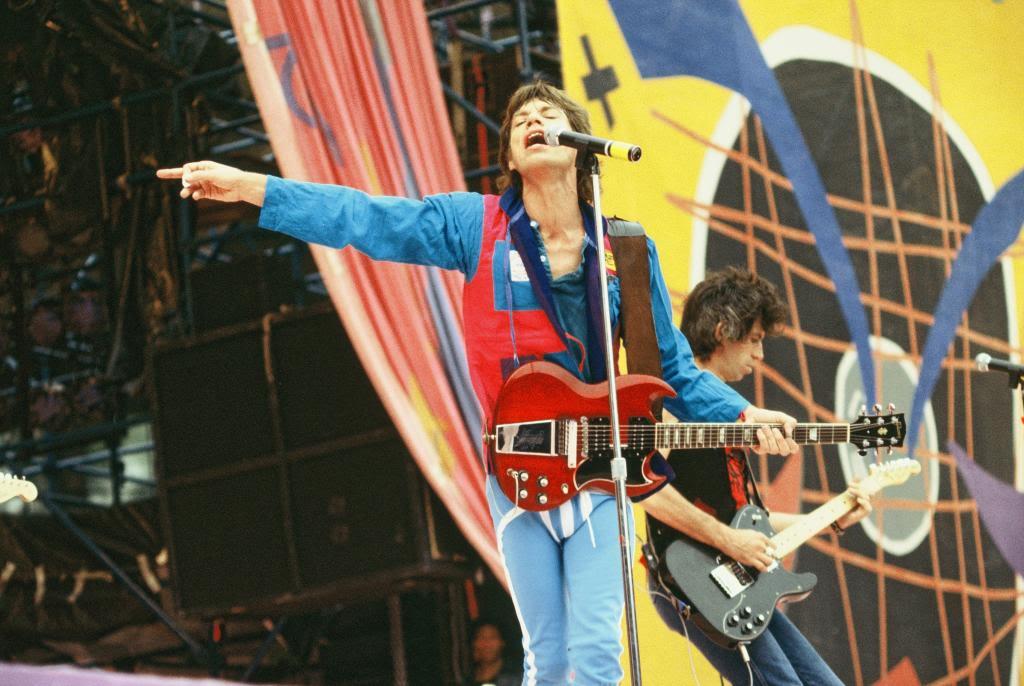
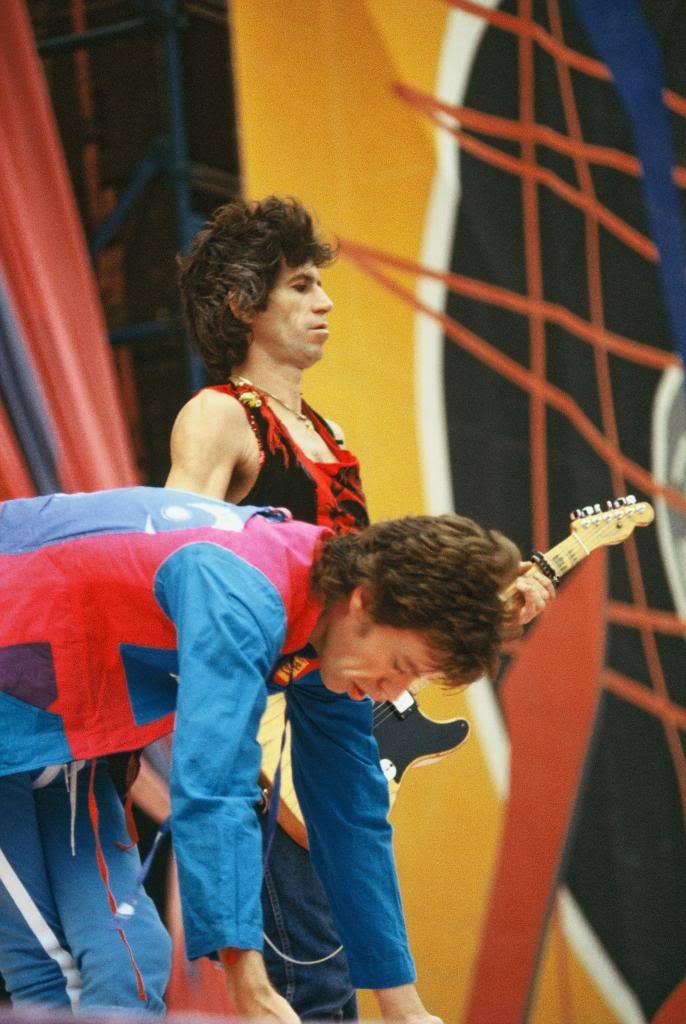
 L
L


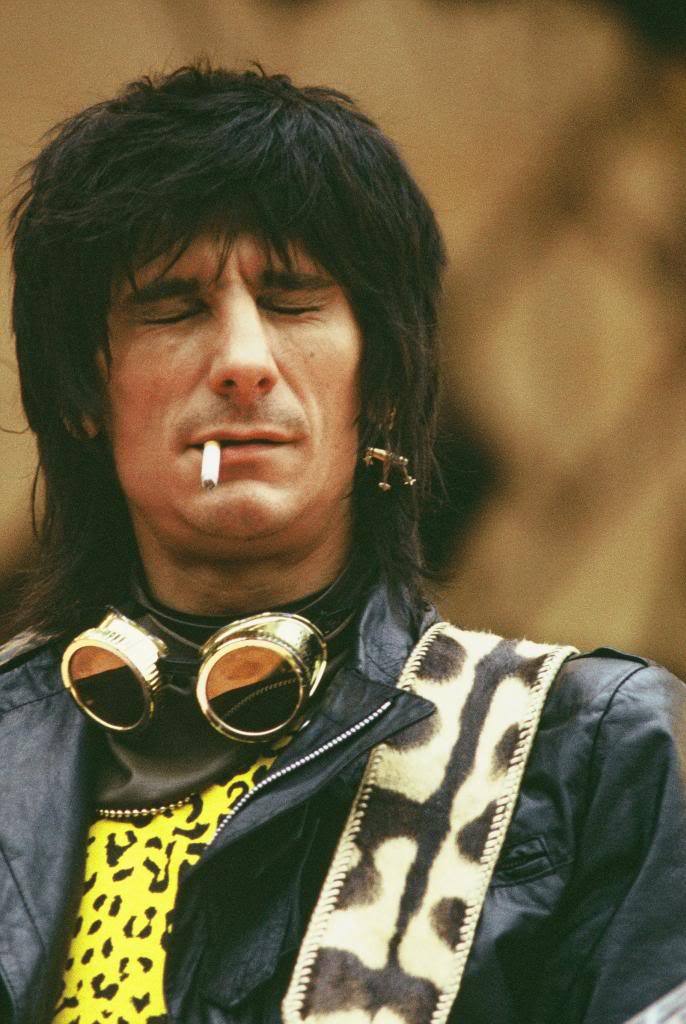

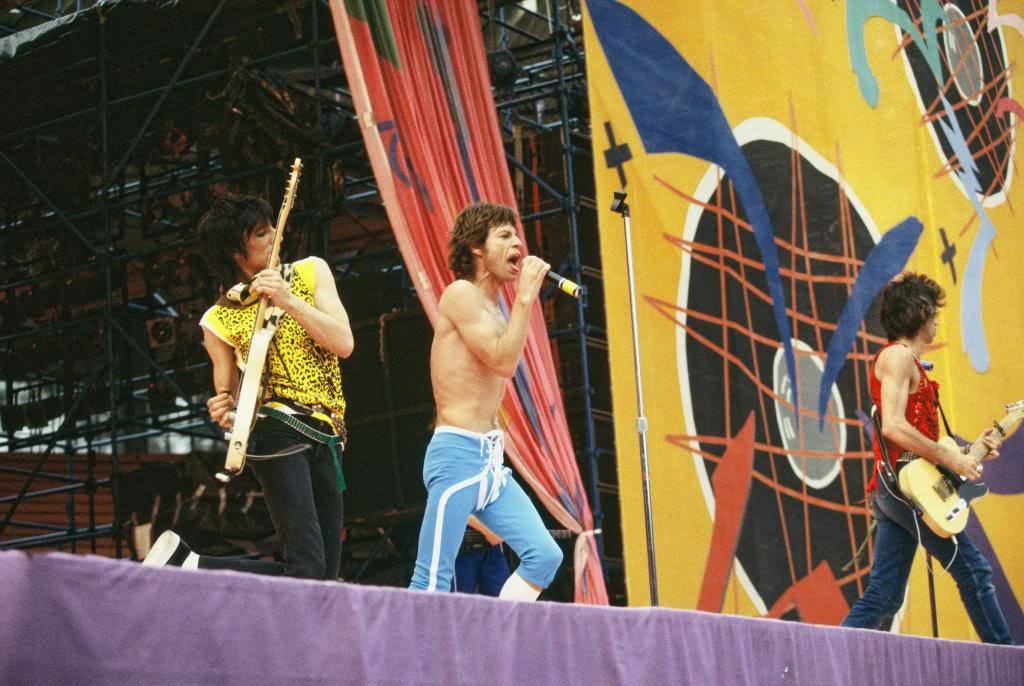



photos by Grison



 L
L







photos by Grison
Re: Stones 1981-1982 Wardrobes
Posted by:
exilestones
()
Date: December 14, 2017 17:03

Keith & Patti in 1982
photo by Jane Rose
Re: Stones 1981-1982 Wardrobes
Posted by:
exilestones
()
Date: December 16, 2017 17:47
Quote
gypsy18
That’s my photo of Lil Wergilis and Keith from 1981. Lil and Keith are still friends, and she is also friends with Marlon and Angela on social media. I found a bunch of old modeling photos of her a few years ago, and we corresponded for a bit. She’s a little tired-looking nowadays. Hasn’t aged badly, but hasn’t aged well either.
Thanks for sharing your photo. It turned-out great!
Re: Stones 1981-1982 Wardrobes
Posted by:
exilestones
()
Date: December 16, 2017 17:48
Quote
Shawn20
I actually found myself in the Orlando photo in the top right corner. WOW! Great memories indeed!
That must have been very cool. I was excited when I found my ugly mug in a Stones concert photo.
Re: Stones 1981-1982 Wardrobes
Posted by:
exilestones
()
Date: December 17, 2017 03:27
NEIGHBOURS

Written by Mick Jagger and Keith Richards, "Neighbours" is notable as being one of two songs from Tattoo You which isn't an outtake from earlier recording sessions. Jagger was inspired by Richards' own run-ins with his neighbours after the guitarist was evicted from his New York City apartment after complaints that he was playing music too loudly. On the story, Richards said at the time of release, "...Patti [Hansen] (Richards' wife) and I (have been evicted from apartments in New York). Mick wrote the lyrics to that - and he never has trouble with neighbours... I have a knack of finding a whole building of very cool people, you know, but there'll be one uncool couple...
'Neighbours' is the first song I think Mick's ever really written for me. It's one I wish I'd written, that."
“ Neighbours, do yourself a favour, Don't you mess with my baby when I'm working all night, You know that neighbours steal off of my table, Steal off of my table, ain't doing all right. ”
Recording took place between the months of October and November 1980, and April through June 1981, at Paris' Pathé Marconi Studios and Atlantic Studios in New York City. With Jagger on lead vocals, electric guitars are performed by Richards and Ronnie Wood, with Wood taking the solo. Charlie Watts and Bill Wyman perform drums and bass, respectively. Sonny Rollins also contributes saxophone, one of his three credits for the album. Ian Stewart performs the song's piano. [en.wikipedia.org])
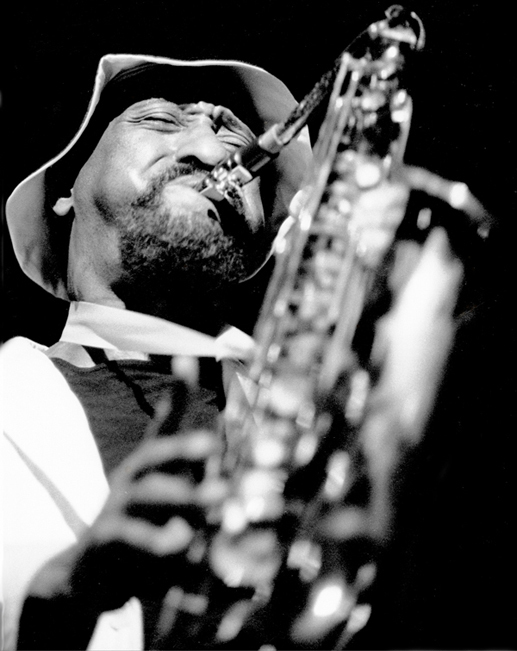
Sonny Rollins
Charlie Watts on Sonny Rollins - "My love for Sonny goes back a long way.
I would have been 15 or 16 when I first played his records. He was incredibly
hip and looked fabulous, and he still does.
I first saw him in 1964. To sit there and watch Sonny Rollins, my God! In
those days he did this fantastic thing: he used to start playing in the
dressing room with no band, then walk out and go around the stage,
using the room to bounce the sound off. It was amazing. I'd never seen anyone
do that.
I've been fortunate enough to get to know him (Sonny Rollins) a bit. Mick
[Jagger] asked me about a tenor player for the Stones' Waiting on a Friend
and I suggested Sonny. He did that song then wanted to have a go at another
one, a real lairy rock'n'roll thing called Neighbours. He played great on it.
It was an overdub, unfortunately, so we never played together."
---

[www.musicrepublicmagazine.com]
---
Neighbours was one of two songs on Tattoo You that did not start as an outtake from another album. "Heaven" is the other.
---
"Neighbours" was performed by the Stones throughout their tours in support of Tattoo You.
---
Tattoo You was released the same year MTV went on the air, and The Rolling Stones had a huge presence on the network that year.
---

An elaborate music video was produced in support of Neighbours,
which featured the Stones in an apartment building setting and
was a take-off on the Alfred Hitchcock film Rear Window. The
Neighbors video was actually filmed at the Taft Hotel in New York City.
VIDEO: [www.youtube.com]

Edited 2 time(s). Last edit at 2017-12-18 02:57 by exilestones.

Written by Mick Jagger and Keith Richards, "Neighbours" is notable as being one of two songs from Tattoo You which isn't an outtake from earlier recording sessions. Jagger was inspired by Richards' own run-ins with his neighbours after the guitarist was evicted from his New York City apartment after complaints that he was playing music too loudly. On the story, Richards said at the time of release, "...Patti [Hansen] (Richards' wife) and I (have been evicted from apartments in New York). Mick wrote the lyrics to that - and he never has trouble with neighbours... I have a knack of finding a whole building of very cool people, you know, but there'll be one uncool couple...
'Neighbours' is the first song I think Mick's ever really written for me. It's one I wish I'd written, that."
“ Neighbours, do yourself a favour, Don't you mess with my baby when I'm working all night, You know that neighbours steal off of my table, Steal off of my table, ain't doing all right. ”
Recording took place between the months of October and November 1980, and April through June 1981, at Paris' Pathé Marconi Studios and Atlantic Studios in New York City. With Jagger on lead vocals, electric guitars are performed by Richards and Ronnie Wood, with Wood taking the solo. Charlie Watts and Bill Wyman perform drums and bass, respectively. Sonny Rollins also contributes saxophone, one of his three credits for the album. Ian Stewart performs the song's piano. [en.wikipedia.org])

Sonny Rollins
Charlie Watts on Sonny Rollins - "My love for Sonny goes back a long way.
I would have been 15 or 16 when I first played his records. He was incredibly
hip and looked fabulous, and he still does.
I first saw him in 1964. To sit there and watch Sonny Rollins, my God! In
those days he did this fantastic thing: he used to start playing in the
dressing room with no band, then walk out and go around the stage,
using the room to bounce the sound off. It was amazing. I'd never seen anyone
do that.
I've been fortunate enough to get to know him (Sonny Rollins) a bit. Mick
[Jagger] asked me about a tenor player for the Stones' Waiting on a Friend
and I suggested Sonny. He did that song then wanted to have a go at another
one, a real lairy rock'n'roll thing called Neighbours. He played great on it.
It was an overdub, unfortunately, so we never played together."
Quote
john r
AT LAST...words from Mr Sonny Rollins, Himself:
"'Mick Jagger and a British film maker who had made a documentary about me in the '50s, came to see me play... I didn't know how it happened, but a little later I got a call from the Rolling Stones asking me to be on their new album.
Charlie Watts is a big jazz fan, and I think it was him who was behind this....
I was supposed to get together with Mick in the studio [in New York], but...I had a hard time finding the studio. I hate being late to anything, and I'm usually not. This time I was late, but not purposely. Mick seemed to feel I was dissing him. But it was completely inadvertant...I thought [my work with the Stones] came out very well. I was completely into what they were doing... And it was a very successful record...'
Sonny obviously understood what the Stones required of him and his improvisations fit in perfectly. The blues are at the roots of the Stones music, and Sonny has always exhibited a deep understanding of blues...Some of his greatest and most important improvisations on record were blues performances, such as 'Blue Seven' and 'Blues For Philly Joe'..."
That's from the book "Open Sky: Sonny Rollins and his World Of Improvisation" by Eris Nisenson (forward by Rollins)
---

[www.musicrepublicmagazine.com]
---
Neighbours was one of two songs on Tattoo You that did not start as an outtake from another album. "Heaven" is the other.
---
"Neighbours" was performed by the Stones throughout their tours in support of Tattoo You.
---
Tattoo You was released the same year MTV went on the air, and The Rolling Stones had a huge presence on the network that year.
---

An elaborate music video was produced in support of Neighbours,
which featured the Stones in an apartment building setting and
was a take-off on the Alfred Hitchcock film Rear Window. The
Neighbors video was actually filmed at the Taft Hotel in New York City.
VIDEO: [www.youtube.com]

Edited 2 time(s). Last edit at 2017-12-18 02:57 by exilestones.
Re: Stones 1981-1982 Wardrobes
Posted by:
exilestones
()
Date: December 17, 2017 17:39
WAITING ON A FRIEND
The “Waiting on a Friend” saxophone solo was performed by the great jazz tenor
sax player Theodore Walter “Sonny” Rollins. The song appears on “Tattoo You,”
which was released in 1981. The song actually pre-dated the album by almost
eight years. It was one of several that were left over from the 1973 sessions
that resulted in the Stones’ “Goat’s Head Soup” album. Engineer Chris Kimsey
convinced Jagger that with new lyrics and additional work the song might be
suitable for the new album they were working on. Jagger did not disappoint,
producing a lyric that demonstrated his more mature side. In an interview
several years later, Jagger confessed that he was intimidated by the prospect
of getting Rollins, a Grammy winner and one of the true great jazz musicians,
to play the solo. According to Jagger, Rollins simply asked him where he should
stand to play. He then told Jagger to dance the part out in the studio so he
could get the rhythm Jagger was looking for. He must have gotten it right.
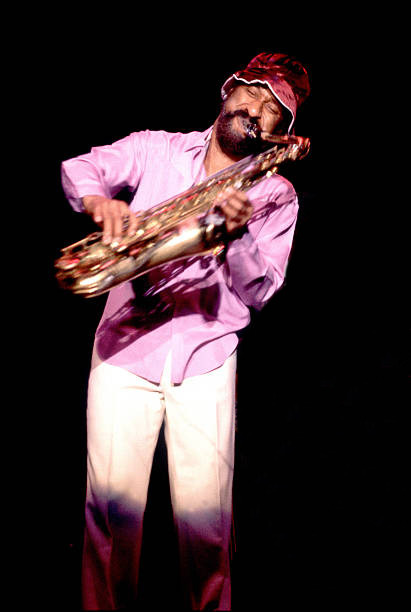
Sonny Rollins 1981
[rapidcityjournal.com]
SLAVE
The full performance of Slave, as recorded in 1975, lasts close to ten minutes. In 1981 the tape was dusted off, remixed and a saxophone overdub added. The unedited 1981 master runs 8:47. The track was eventually parred down to 4:59 for the release of Tattoo You. When the album was remastered in 1994 we got the 6:32 version. - GuyDon
Edited 1 time(s). Last edit at 2017-12-18 02:55 by exilestones.
The “Waiting on a Friend” saxophone solo was performed by the great jazz tenor
sax player Theodore Walter “Sonny” Rollins. The song appears on “Tattoo You,”
which was released in 1981. The song actually pre-dated the album by almost
eight years. It was one of several that were left over from the 1973 sessions
that resulted in the Stones’ “Goat’s Head Soup” album. Engineer Chris Kimsey
convinced Jagger that with new lyrics and additional work the song might be
suitable for the new album they were working on. Jagger did not disappoint,
producing a lyric that demonstrated his more mature side. In an interview
several years later, Jagger confessed that he was intimidated by the prospect
of getting Rollins, a Grammy winner and one of the true great jazz musicians,
to play the solo. According to Jagger, Rollins simply asked him where he should
stand to play. He then told Jagger to dance the part out in the studio so he
could get the rhythm Jagger was looking for. He must have gotten it right.

Sonny Rollins 1981
[rapidcityjournal.com]
SLAVE
The full performance of Slave, as recorded in 1975, lasts close to ten minutes. In 1981 the tape was dusted off, remixed and a saxophone overdub added. The unedited 1981 master runs 8:47. The track was eventually parred down to 4:59 for the release of Tattoo You. When the album was remastered in 1994 we got the 6:32 version. - GuyDon
Edited 1 time(s). Last edit at 2017-12-18 02:55 by exilestones.
Re: Stones 1981-1982 Wardrobes
Posted by:
exilestones
()
Date: December 20, 2017 17:02

Jerry Hall and Mick Jagger during studio recording at music producer Chris Blackwell's home in Jamaica. Mick pulled the panties off the model but she doesn't seem to mind.
Re: Stones 1981-1982 Wardrobes
Posted by:
GasLightStreet
()
Date: December 20, 2017 18:44
Quote
exilestones
NEIGHBOURS
Written by Mick Jagger and Keith Richards, "Neighbours" is notable as being one of two songs from Tattoo You which isn't an outtake from earlier recording sessions.
Which is not true, of course. It, and Heaven, were recorded for EMOTIONAL RESCUE in 1979.
Re: Stones 1981-1982 Wardrobes
Posted by:
exilestones
()
Date: December 21, 2017 07:59
Quote
GasLightStreetQuote
exilestones
NEIGHBOURS
Written by Mick Jagger and Keith Richards, "Neighbours" is notable as being one of two songs from Tattoo You which isn't an outtake from earlier recording sessions.
Which is not true, of course. It, and Heaven, were recorded for EMOTIONAL RESCUE in 1979.
Thanks for the info and thanks for not posting the whole post!
Re: Stones 1981-1982 Wardrobes
Posted by:
GasLightStreet
()
Date: December 21, 2017 21:36
Quote
exilestonesQuote
GasLightStreetQuote
exilestones
NEIGHBOURS Written by Mick Jagger and Keith Richards, "Neighbours" is notable as being one of two songs from Tattoo You which isn't an outtake from earlier recording sessions.
Which is not true, of course. It, and Heaven, were recorded for EMOTIONAL RESCUE in 1979.
Thanks for the info and thanks for not posting the whole post!
If there was a way to shrink some of these pictures that turn out huge when posting them I would've done that as well! Quoting the whole thing, yeah, too much. Just get to the point!
Re: Stones 1981-1982 Wardrobes
Posted by:
exilestones
()
Date: December 22, 2017 18:05
Quote
GasLightStreetQuote
exilestonesQuote
GasLightStreetQuote
exilestones
NEIGHBOURS Written by Mick Jagger and Keith Richards, "Neighbours" is notable as being one of two songs from Tattoo You which isn't an outtake from earlier recording sessions.
Which is not true, of course. It, and Heaven, were recorded for EMOTIONAL RESCUE in 1979.
Thanks for the info and thanks for not posting the whole post!
If there was a way to shrink some of these pictures that turn out huge when posting them I would've done that as well! Quoting the whole thing, yeah, too much. Just get to the point!
Usually I search Google for the image to see if I can find just the right size.
Re: Stones 1981-1982 Wardrobes
Posted by:
exilestones
()
Date: December 22, 2017 18:32
This article is a great read and gives insight as why Charlie Watts is a great drummer and why he's very important to the Rolling Stones success and much more!
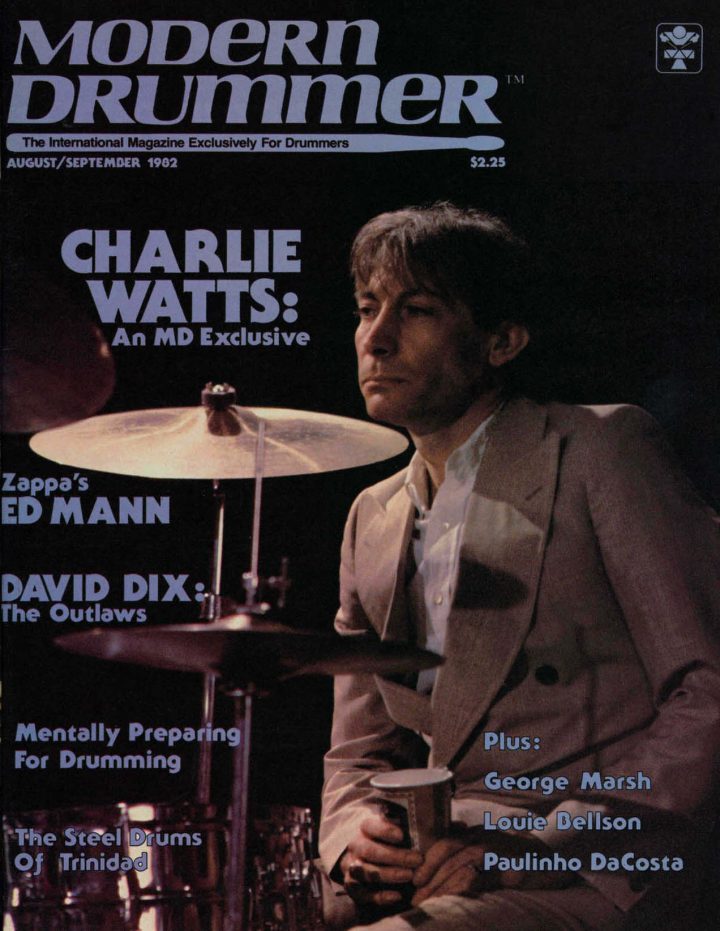
Charlie Watts
by Robyn Flans
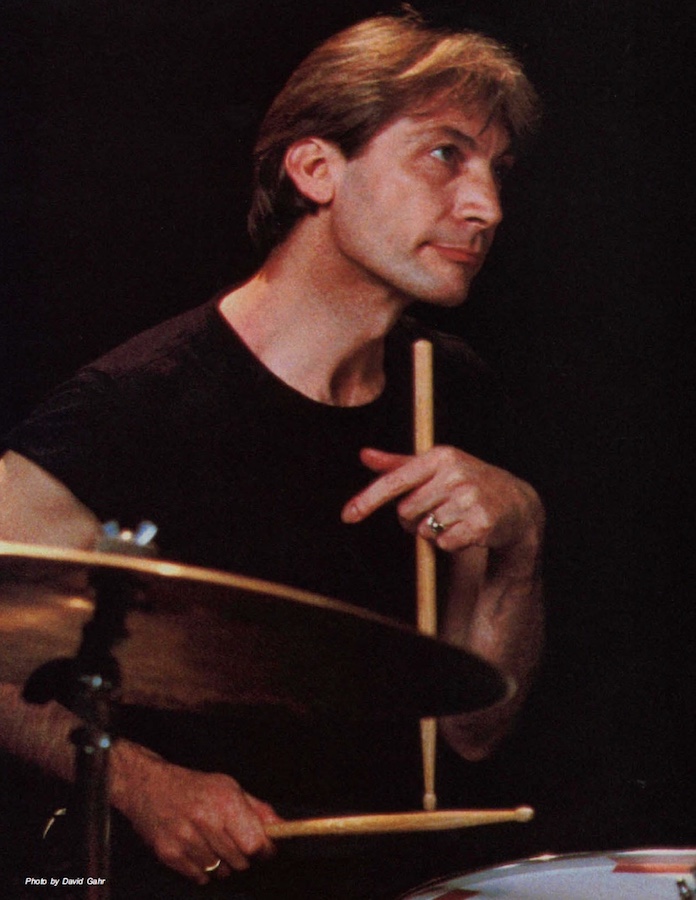
Editor’s note: The following articles on Charlie Watts are the
result of over two year’s worth of effort on the part of MD. There were
numerous phone calls to record companies and management offices, where the
answer was always the same: “Charlie Watts does not do interviews.”
Last fall, while the Rolling Stones were on tour in America, Charlie met up
with his friend (and MD Advisory Board member) Jim Keltner, who persuaded
Charlie to talk to us. (Thanks, Jim) He agreed to speak with MD’s Robyn Flans
in L. A., but it was only after Robyn followed him to San Francisco that he
finally sat down in front of a tape recorder.
A month later, MD Managing Editor Scott K. Fish set up a meeting with Charlie
and E Street Band drummer Max Weinberg. Again, Charlie agreed to let a tape
roll. So here then is Charlie Watts who, although he actually spoke to us
twice, began each session by saying, “I don’t do interviews. But we can talk
if you want to…”
After spending six hours with Charlie Watts, it was clear that he just doesn’t relish speaking about himself. I quickly realized that it would be necessary for me to turn to history books and others’ accounts to fill in the blanks that Charlie takes little pleasure in recalling.
Everyone who has written about the Rolling Stones, from journalists to the Stones’ own personal aids and cooks, has very little to say about him. This is not because Charlie is nondescript, but rather because he lives a very quiet life while off tour, keeps to himself and his family (his wife Shirley of seventeen years and their daughter) and does not partake in the much publicized activities of a “rock star.”
“I probably was a typical musician, but I wasn’t, and am still not, a Rolling Stone. I mean, I am because that’s what I do, but the other stuff is bullshit. I don’t know what the Rolling Stones are. For that you should talk to someone else other than me. I don’t know what they are. To me, they’re friends of mine. They are whatever you’ve read and they’re worse and they’re better. I never read the bullshit in the papers and I don’t have to hide in hotel rooms. I used to do that and I hated it. The worst time in my life was about the time the Rolling Stones became like the Beatles, I suppose. There were girls screaming and carrying on and I couldn’t stand it because I thought it was silly. I loved it for what it meant and what the band was doing, but I couldn’t stand not being able to do anything. I hated that. That doesn’t mean anything and I never wanted that. I’m just not interested in that. The only time I love attention is when I walk on stage, but when I walk off, I don’t want it. For the band, I want everyone to love us and go crazy, but when I walk off, I don’t want it. I guess I want both worlds. I never could deal with it and I still can’t. I don’t know how Mick does it. He’s an incredible man. So is Keith—an amazing guy. I don’t know how they do it, I’m serious. Like doing so many interviews. This is the only time I’ve so much as spoken to a journalist this whole tour and the reason I’m doing this is because drumming is something that I love.”
He refuses to acknowledge his own musical contributions, continually downplaying his abilities. In an interview with Rolling Stone (11/12/81) Keith Richards says, “I’m continually thankful—and more so as we go along—that we have Charlie Watts sittin’ there, you know? He’s the guy who doesn’t believe it, because he’s like that. There’s nothing forced about Charlie, least of all his modesty. It’s totally real. He cannot understand what people see in his drumming.”
Whether Charlie understands it or not, the fact remains that he is often considered the model of what a rock drummer should be. Pick up a copy of The Village Voice, for instance, and look in the back where bands advertise for musicians. Invariably there will be a couple of ads that say something like: “Charlie Watts-style drummer wanted for rock group.” Journey drummer Steve Smith had this to offer about Charlie’s drumming: “When I first listened to Charlie Watts as a kid, I didn’t hear a whole lot there. It was because I was really unaware of what he was really great at, which is just an incredible feel. Now, I love the way he plays, especially after seeing him and doing those gigs with them. His time is really steady and really solid and his feel is the nastiest rock and roll feel I’ve ever heard. As a kid, I was totally into chops and I didn’t appreciate just a simple feel. I was impressed by the flash, and I wasn’t listening deeply enough. Now I have a totally different attitude. The bottom line is how it feels and what you can get across, emotionally.”
Charlie disputes that he has his own style or that there is anything special about what he does. “They (the Stones) developed it for me,” he told me. “I play as well as I can with this band and they happen to be very popular. But anyone can play like I do, yet that’s what I love about it in a way. Anyone can do it, really. Maybe they can’t do it the way I do it and it is no big deal to do it, but not anyone can play like Max Roach. You can’t play like Joe Morello. Not many people can play like that guy and there aren’t many people who can play like Jake Hanna. There are very few people in the world who can play that good. There are very few people in this world who can play like Louis Bellson. But there are a million kids who can play like me. They’re not me doing it, but they can play like it. I can play like Al Jackson, but I’m not him doing it. But to play like Joe Morello is something else. There aren’t many people who can play 5/8 time and 16/4 and all that, and I mean, play it. There are a lot of people who can play like Al Jackson, but they’re not Al Jackson and never, ever will be. They’ll never be as good as he is, but they can actually play those things. I think Al Jackson is as great as all those people I’ve mentioned, but what I’m saying is that he taught people how to play those things. I’ve heard girls play exactly like me and they can play everything. They’re not me, but they can play everything. There are very few people in this world who can do what I’m talking about. You see, the audience doesn’t really want to hear me play ‘Honky Tonk Woman.’ They want to hear the song, primarily, with me doing it, because the song is more important than me.”
Jeff Porcaro responded: “No. Wrong. Not anybody can do what he does. I know if I sat down and played with the Stones, I would be trying to play like Charlie Watts. I know myself as a professional drummer and I would sit down and say, ‘Okay, now play simple here, be sparse and don’t do that fancy fill because Charlie wouldn’t do that.’ But my snare drum wouldn’t sound like Charlie’s because that’s a whole other unique sound.
“I think Charlie Watts is a great drummer for pretty basic reasons. I like his time, I like his groove and I love what he plays with the Stones. When you look at Charlie and what he plays, it seems like some of those technical facilities that he doesn’t have, makes for the sparseness that he creates when he plays and that you hear. There are no rules or anything and nobody plays like him but him.”
So how did Charlie become involved with drums to begin with? “Blame it on Chico Hamilton, I suppose. When I was twelve, I heard Chico Hamilton with Gerry Mulligan playing ‘Walking Shoes’ and I played it on a skin of a banjo. I used to play brushes like Chico Hamilton. Well, not like him, but that was the inspiration anyway. After that, I heard Charlie Parker and that was it. It was all over. It was the music really, that got me going, because I’m not a drummer. I’m not a drummer because I never learned to play the drums. I’m not like the people I admire. They learned and I never did. I just sat and played drums like they played them. Max Roach can play anything and I sat and copied it. When I heard Charlie Parker play, I would play like Max Roach or Roy Haynes.”
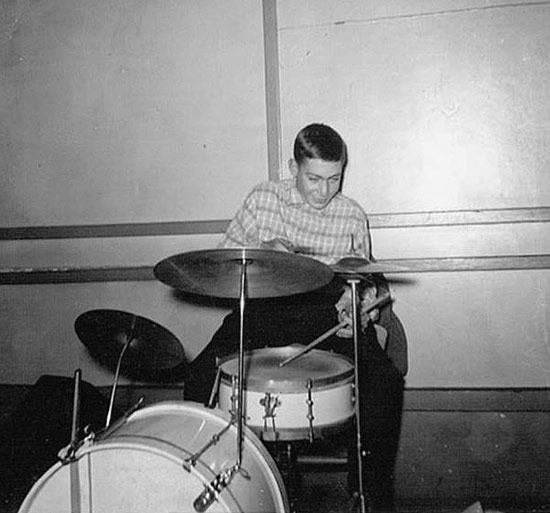
Charlie was so enamored of Charlie Parker that in 1962 he wrote a book called Ode to a High Flying Bird, which was in the vein of a children’s book and illustrated by Watts. It featured Parker as an actual bird hunched over a saxophone so that the body blended into the head. Unfortunately, the book was never issued in the U.S..
“When I had the honor to go to New York, that was it! All I wanted to do was go to Birdland and I was lucky enough to get there before it closed and that was it for me. I still walk down 52nd Street. I know it’s not the same anymore, but I do it. It’s just something that really meant something to me as a kid, listening to Charlie Parker, and to think that he lived there and walked down that street and played there. I walk there, even now, at forty years of age. I can imagine being Sid Catlett, walking down that street with the drums on my arm, but it’s just a dream world. But it’s a dream world that I love, and if I ever lose it, I’ll stop playing drums.
“Among my favorite drummers is Dave Tough. Nobody knows how great he was. There’s a lot of people I admire and they are what I try to be, but I’ll never be that good. In my life, I’ll never be that good because I’m not that good. Tony Williams is one of my favorite drummers. That’s how someone should look when he plays the drums. He is a fine looking man and a fine looking drummer. He is one of the innovators as far as I’m concerned. To do what he did at the age of nineteen, he must be somewhere else. To me, some of the finest drumming came from Jerry Allison [one of Buddy Holly’s Crickets]. He is one of the finest drummers and very underrated. He plays songs; he doesn’t play the drums, and that’s what I’d love to do. I can’t do that, though, because I’ve got Max Roach, who is a drummer, inside of me. Yet I’ll never be Max Roach and I’ll never be Jerry Allison. Jim Keltner, for instance, can play the drums. Jim can read and he’s a fine musician. I’m not a fine musician. I play the way I do and I happen to be lucky enough to be in a band that is very popular, and that’s all. If I wasn’t with a popular band, I’d be one of a million kids out there.”
Jim Keltner disputes this: “Most drummers, including Charlie, feel guilty when they don’t read music, and they feel that they’re not real musicians. Charlie is one of my favorite drummers because of his simplicity, his sound and his time feel. The thing is, that Charlie is playing with virtual brothers, and it becomes second nature. He doesn’t know what he does. But he doesn’t have to know what he does.
“If you listen to the old records, particularly, you hear rushing and dragging and you hear him play a fill and it just barely makes it. When you talk about a drummer and you say those two things about him, right away you think, ‘Wait a minute— that’s wrong.’ A drummer is about time and about playing with taste and fills and all that, and that’s what the civilized musical world expects from you. With Charlie, he’s always broken those rules, but he’s done it innocently and also with a magic band, and it works. He’s had a chance to refine that up to the point where the last couple of records, it’s just pure, out and out, great rock and roll drumming.”
“Drumming, to me, has always been fun,” Charlie explains. “That’s why I couldn’t play with Doc Severinsen and the Tonight Show Band. I couldn’t do that gig. I couldn’t cover that gig and not read. It was always fun to me, sort of a hobby. It wasn’t really a hobby, but something I loved and it still is a lot of fun. It’s become something I love, more than when I was a kid, really. I was sort of dragged into it because it was fun and I was able to play for a living.”
In The Rolling Stones—The First Twenty Years, his mother recalled, “Charlie always wanted a drum set, and he used to rap out tunes on the table with pieces of wood or a knife and fork. We bought him his first drum set for Christmas when he was fourteen. He took to it straight away, and often he used to play jazz records and join in on his drums.”
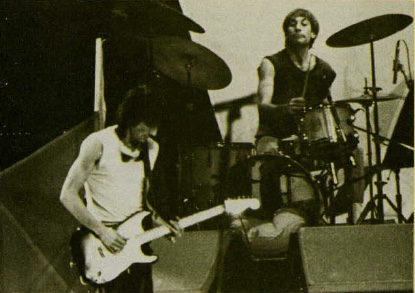
Paul Natkin photo
“I was just a teenager when I first got interested in drums,” Charlie said in the same book by David Dalton. “My first kit was made up of bits and pieces. Dad bought it for me and I suppose it cost about twelve pounds. Can’t remember anything that gave me greater pleasure and I must say the neighbors were great about the noise I kicked up. They had a sort of tolerant understanding… ‘Boys will be boys’ kind of thing! I don’t think I ever wanted to play any other instrument instead of the drums. I marvel sometimes even now at the way guitarists can get such tricky little phrases by just quietly using their fingers, but drums are for me.”
Seated with me, he recalled, “I practiced a lot but I never had lessons. I hated play ing to records. I used to try, but I could never really play to records. I can’t over dub drums either. I hate doing that. Sometimes you have to, but I can’t do it very well. I taught myself by listening to other people and watching. I’d go and see every American who came to England. To me, how an American plays the drums is how you should play the drums. That’s how I play. I mean, I play regular snare drum, I don’t play tympani style, although I know guys who play fantastically like that. I play march-drum style. Most rock drummers play like Ringo; a bastard version of tympani style. In reality, that’s what it is because tympani style is fingers and most rock drummers play like that because it’s heavy offbeat.”
In Dalton’s book, Charlie reminisced: “Alexis Korner and Cyril Davies were the start of rhythm and blues in this country (England). If things were as they should be, Alexis would be right at the top. I met Alexis in a club somewhere and he asked me if I’d play drums for him. A friend of mine, Andy Webb, said I should join the band, but I had to go to Denmark to work in design, so I sort of lost touch with things. While I was away, Alexis formed his band, and came back to England with Andy. I joined the band with Cyril Davies and Andy used to sing with us. We had some great guys in the band, like Jack Bruce. These guys knew what they were doing. We were playing at a club in Ealing and they (Brian, Keith and Mick) used to come along and sometimes sit in. It was a lot different then. People used to come up on the stand and have a go, and the whole thing was great.”
How did he become a member of the Rolling Stones in 1963, I asked. “Pure accident,” he replied. “There were many bands in London and I happened to be free at the time I joined them. That’s my opinion. Other people have another. I played with Mick and Keith when I played with Alexis and everybody knew each other. Alexis wanted a sort of Charlie Mingus r&b band and he’s still the same. I love him. He never stops moving. Marvelous man. But I had played with Alexis for about a year or nine months and then gave up my chair to Ginger [Baker] because I thought he was a better drummer than I was. I played with three other bands and I was asked to join Mick and them. I’ve lived with them ever since, for twenty years. I was between jobs as a designer and I used to leave their apartment and go for interviews while I played with them. I did that for about six months. Then, all of a sudden, I made more money doing that than I could make being a designer and suddenly I became a profesional musician, whatever that is. I’m still not, in my opinion, but I had to join the Union suddenly.”
In Our Own Story by the Rolling Stones, a book published in 1965, Watts had elaborated on the subject: “The scene was growing bigger week by week for Alexis. I loved the work, but it got to be too much of a strain after a while. So I sort of backed out and worked with one or two other groups, meeting up with Brian and Mick and Keith from time to time.
“So they asked me about kicking in with them. Honestly, I thought they were mad. I mean they were working a lot of dates without getting paid or even worrying about it. And there was me, earning a pretty comfortable living, which obviously was going to nosedive if I got involved with the Stones. It made me laugh to think of them trying to get me in with them too. “But I got to thinking about it. I liked their spirit and I was getting very involved with rhythm ‘n’ blues. I figured it would be a bit of an experiment for me and a bit of a challenge, too. So I said okay, yes, I’d join. Lots of my friends thought I had gone stark raving mad.
“See, the thing with me is that I’m not really much of a worrier. I do get involved on stage, of course, especially when I think something is going wrong, but that’s all. I reckon tomorrow can look after itself.
“Only thing that had me wondering, once I’d made up my mind, was the fact that the Stones were so disliked inside the jazz world. I’d heard people talking about them—and it’s true to say nobody had a good word for them. They were complete outsiders. Nobody wanted to know about the great sound they were making— because everybody was too busy looking on them as just a gang of long-haired freaks. And I certainly wasn’t keen on letting my own hair grow at that time just for the sake of being a member of the group.
“But this bunch of outsiders, what people called ‘lay-abouts,’ struck me as having a pretty good future. I thought the atmosphere they got going simply had to make it big one day …”
Of course, Mick and Keith go back to childhood. The story is that they met on a train on the way to school in 1960 after not having seen one another since they were kids. Under Mick’s arm was an album by Chuck Berry, which sparked a stimulating conversation. Finding they possessed similar musical tastes, they began to experiment together. It was 1962 when they began to frequent the club in Ealing where they came across Brian and Charlie. Brian, more into jazz-blues than the Chicago blues that Mick and Keith favored, joined forces with them.
In an interview with Bob Greenfield in 1971, Keith said, “I’ll tell you how we picked Charlie up. The R&B thing started to blossom and we found Charlie playing on the bill with us in a club. There were two bands on; Charlie was in the other band. We did our set and Charlie was knocked out by it. ‘You’re great, man,’ he says… We said, ‘Charlie, we can’t afford you, man.’ Because Charlie had a job and just wanted to do weekend gigs. Charlie used to play anything then—he’d play pubs, anything, just to play, cause he loves to play with good people. But he always had to do it for economic reasons.
By this time we’re getting three, four gigs a week. ‘Well, we can’t pay you as much as that band but…” We said. So he said okay and told the other band: ‘I’m gonna play with these guys.’ That was it. When we got Charlie, that really made it for us.”
In those days, the Stones were basically a rhythm and blues group, and their material was made up mostly of songs by such artists as Chuck Berry, Muddy Waters and Bo Diddley. Their first English single was Chuck Berry’s “Come On,” and their first single to do well on the American charts was Buddy Holly’s “Not Fade Away.” The Stones’ first album was made up of a lot of the standard r&b favorites of the day, with only a few original compositions.
“The Last Time” was the first original Stones song to be released as the A side of a single. This was followed by “Satisfaction” and “Get Off Of My Cloud,” also written by Jagger and Richards. These songs established the pattern for the Stones’ style—they were written around a basic, simple riff.
One of the secrets to being a successful member of a group is to concentrate not on yourself, but on the requirements of the music. An often-heard comment about Charlie Watts is that: “He is the perfect drummer for the Rolling Stones.” After observing the characteristic structure of Stones’ songs, it became obvious how Charlie’s drumming complements the music. If a song is based on a simple, repeating riff, the drum part must be equally simple and repetitive. Busy patterns, fills, and subtle colorings are not appropriate. Indeed, there is nothing subtle about the Stones. Their power comes from their directness—basic chord progressions, basic rhythms, and even basic lyrics. Charlie provides basic drumming.
As the Sixties progressed, the Stones’ music gradually shifted from the r&b influence towards a more pop sound, with tunes such as “Lady Jane” and “As Tears Go By” finding their way onto albums. The group even experimented with “psychedelic” music, producing a rather unmemorable album called Their Satanic Majesties Request.
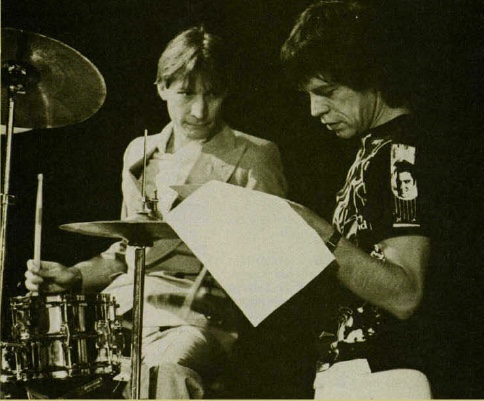
David Gahr photo
Beggars Banquet, in late 1968, marked the return of the r&b influenced Stones. Since that time, the band has stayed pretty close to its roots, although there have been other influences. One important change occurred in 1969 when Mick Taylor replaced Brian Jones as guitarist. Taylor had a clean, jazz-influenced style which contrasted well with Richards’ raunchy rock sound. The difference is very obvious on “Can’t You Hear Me Knocking” from the Sticky Fingers album. The tune starts off with Keith Richards ripping off a few raw rock licks, before settling into the tune’s main riff. Charlie plays basic, driving rock. The second half of the song turns into a jazz jam with a saxophone solo, followed by a Taylor guitar solo. Charlie accordingly turns into a cross between Tony Williams and Mel Lewis—maintaining a quarter pulse on hi-hat, while pulling a variety of colors from his cymbals. As always, Charlie produced exactly what the music called for.
In ’75, Ron Wood replaced Taylor, and because Wood plays so much like Richards, the group has leaned more heavily on basic rock. One notable influence of the last few years has been reggae, and again, Charlie has successfully mastered the style.
When asked what bass player Bill Wyman thinks gives the Stones their characteristic sound, he answered in Guitar Player (Dec., 1978): We have a very tight sound for a band that swings, but in amongst that tight sound, it’s very ragged as well. Every rock and roll band follows the drummer, right? If the drummer slows down, the band slows down with him or speeds up when he does. That’s just the way it works—except for our band. Our band does not follow the drummer; our drummer follows the rhythm guitarist, who is Keith Richards. Immediately you’ve got something like a 1/100th of a second delay between the guitar and Charlie’s lovely drumming. Now, I’m not putting Charlie down in any way for doing this, but on stage, you have to follow Keith… So with Charlie following Keith, you have that very minute delay. Add to that the fact that I tend to anticipate a bit because I kind of know what Keith’s going to do. So that puts me that split second ahead of Keith. When you actually hear that, it seems to just pulse. You know it’s tight because we’re making stops and starts and it is in time—but it isn’t as well. Sometimes the whole thing can reverse. Charlie will begin to anticipate and I’ll fall behind, but the net result is that loose type of pulse that goes between Keith, Charlie and me.
“(It began) probably as a matter of personality. Keith is a very confident and stubborn player, so he usually thinks someone else has made a mistake. Maybe you’ll play halfway through a solo and find that Keith has turned the time around. He’ll drop a half- or quarter-bar somewhere, and suddenly Charlie’s playing on the beat, instead of on the backbeat—and Keith will not change back. He will doggedly continue until the band changes to adapt to him. He knows in general that we’re following him, so he doesn’t care if he changes the beat around or isn’t really aware of it. He’s quite amusing like that. Sometimes Keith will be playing along, and suddenly he becomes aware that Charlie’s playing on the beat, and he’ll turn around and point like, ‘Aha, gotcha!’ and Charlie will be so surprised and suddenly realize he’s on the beat for some reason, and he hasn’t changed at all. And then he’ll be very uptight to get back in, because it’s very hard for a drummer to swap the beat. So it’s a mite funny sometimes, but it does happen, especially on the intros. Some of the intros are quite samey sounding. I mean, if you’re doing a riff on one chord with the inflections that Keith uses, and you’re not hearing too well with the screaming crowds, you cannot tell if you are coming in on or off the beat. ‘Street Fighting Man’ is a tune that tends to happen on. He’s got monitors, but in those circumstances it’s very difficult to hear accents—the difference between the soft and hard strokes. The problem is that Charlie is often totally unaware that he’s on the wrong beat, and he shuts his eyes and pulls his mouth up, you know, and he’s gone. You can’t even catch his eyes because they’re closed. Someone has to go up and kick the cymbal. I don’t think that happens too often with other bands. But I think that’s a little of the charm of the Stones. They’re not infallible, and we know that. Everybody else might as well know it, too.”
In Guitar Player (11/77), Keith Richards said he plays off of Charlie’s accents. “We tend to play very much together. I have to hear Charlie and I think he has to hear me. I love playing with Charlie; he knocks me out every time. Sometimes I don’t see him for six months or so, and we get together and he’s better every time. He must practice so much.”
“I do practice every day if I’m not playing,” Charlie told me. “I sit and watch television and practice. I never did that when I was a kid, so I have to do it now. I’ve learned more about what I’m doing now than I did then.”
As far as the recording end of it, Charlie explains, “We don’t lay tracks. We always play as a band. We very rarely overdub drums and bass and such. I have all and nothing, as far as creative choice, which means, I just sit there and play the song. Mick or Keith will say, ‘No, that’s horrible,’ and I think, ‘Yeah, it is horrible and all I should do is nothing; just play.’ You can’t play like Max Roach over ‘Jumpin’ Jack Flash,’ so you just sit and say, ‘You’re right.’ And then I’ll do something and they’ll say, ‘That’s great, keep doing that.’ So it’s all or nothing. I have as much say as anyone in what I do.
“A lot of the recording end for me is the engineer and mixer, which is often Mick. It’s the engineer who makes my drum sound amazing. I don’t do anything other than I do on a bad night and he makes them sound great while I just do the same thing. I never tune drums. It’s one of the blind spots I have. I just hit them.
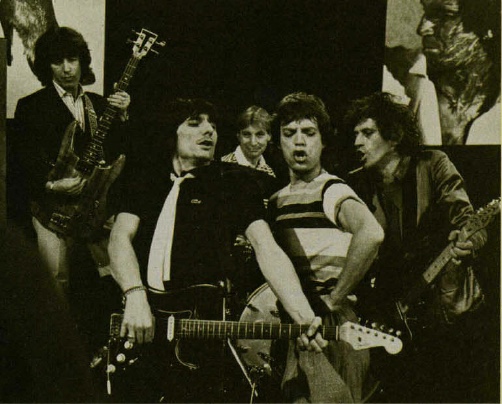
David Gahr photo
“I’m fortunate that I don’t really have to stake a claim on anything because the claim has already been made just by everyone being there. It is what it is, with or without me, but it happens to be with me. I don’t really have to make a point of making my impression. I don’t ever think of it that way. I’ll say the drums should be louder or that sort of thing, but if someone says, ‘No, they’re too loud,’ I don’t really care. I don’t really have that sort of mind to carry the songs through either. I can’t stand mixing. I stay around for it, but I can’t stand it. It’s boring and bloody hard work as well. I guess I don’t understand it either.”
When I mention how much more predominant the drums have been on recent recordings, he laughs, “The drums are awfully loud, aren’t they? They make it sound like more than I am, but I’ve always been loud.”
Charlie has always preferred Gretsch drums, although the first set his dad bought him was a Ludwig, which he used on the album he did with Rocket ’88. He keeps his Gretsch set to the bare essentials, however, with just four drums, about which he says, “I don’t use the tom-toms much. I’m not a virtuoso, you see. I just try to play the rhythm. I can’t take fills and I can’t play four-bar breaks and all that, but what I do I try to make as fine as I can make it. Oh yeah, I get it on occasion,” he adds modestly, “But to play like Frank Butler . . . I don’t have that finesse and I never will ever have it in my life. That’s something else, and that, to me, is a drummer.”
After twenty years, Charlie maintains a simple attitude about performing live and playing with the same people. “Every gig is neither bad or good. I always want it to be better than the last one. It’s never the same any night. Even if you play a cocktail lounge or a Bar Mitzvah every night. It’s never the same, really. You play ‘Hava Nagila,’ and I’ve done that, and it’s never the same. If you do that four times a week, you get a good ‘Hava Nagila’ or a bad one, whatever band you’re in. Sure, I’m sure if you’ve done eighteen Bar Mitzvahs in a row, it can get the same. I’ve done about four of them. But the songs we do now are never the same. Of course, in some ways it is, it’s all three chords and all I play is two and four, but really, it’s never the same to play them. I just want to get to the end of it and make it as good as it can be. If people have trouble keeping it fresh every night, then they can’t like the people they’re with or the music they’re playing. It’s probably both.
“I hate touring and I hate going on the road and my first reaction to this last tour was, ‘How the hell can I go out there at forty years of age and do that?’ I didn’t think people would turn up to see it, but they did. I don’t think they really see me, though. They see the whole thing and I’m lucky enough to be part of it. I’d love to play in a lounge with a trio, but this band, I think, is one of the best and it can’t be beat at what it is and I’m lucky enough to be involved in that. But I’m only as good as the next gig I do. That’s how I’ve always seen it and I think the band is only as good as the next gig it does. With the accolades and everything, it’s very easy to sort of get comfortable. It’s a lovely thing to have, but it doesn’t really mean anything. It’s your next stop that is important and then the next one. And you just try to enjoy yourself while you’re doing it. But you don’t get the accolades if you’re crap, so that’s what I mean about this band—they’re damn good and I don’t care if people say they’re noisy. They are noisy. They make my ears hurt,” he laughs. “But they’re bloody good at being noisy and they’re bloody good at whatever they do. What I try to do is make it better and I try and help out the best that I can.
“Musicians are the most selfish people in the world, actually,” he states. “The world revolves around them and all you live for is that two hours on stage and that’s all they have. A painter or a draftsman can work any time. It can be for five minutes or for a year. With musicians, it’s also a closed shop. They’re the most unwelcoming people, really. I’m not saying that they’re not nice people or intelligent, but it’s what they do. They aren’t the most open of people. I think it’s their attitude and I don’t think it’s ever going to change. So much for philosophy.
“As far as playing with the same people all the time, it’s no different than playing with others. I think Bill Wyman is an incredible bass player. Some people don’t know what he’s doing, really, but it’s right. You don’t really hear him actually half the time, or I don’t, but he’s right and very rarely wrong. He’s very comfortable to play with. I’ve never really sat and listened to the bass, though. We don’t sit and work out rhythm patterns or anything like that like some bands do. He plays to a song that Mick writes and I do the same thing and it just fits. He plays with other drummers too, that are fantastic players, actually, like I play with others. Bill is very comfortable, but Jack Bruce is comfortable to me too. Anyone who plays well is comfortable. Pete Townsend is comfortable to play with. I’m not saying he’s better or worse to play with than Keith, but he’s comfortable also.”
About his projects outside the Stones such as Rocket ’88 and the recording with Nicky Hopkins and Bob Hall, he says, “They’re just fun, aren’t they? The playing is no different, really. It’s another gig, isn’t it? That’s all and you have to do that one as best you can also. You just play. They’re all exciting. Rocket ’88 is great because it has four saxophone players, a trumpet and it’s lovely. It’s a different thing to play and it has a different sort of quality of playing. I don’t mean good or bad, just different. It’s great in its way and it’s fun for me to do, but it will never be that magic that happens. I have a great time with them, though.
“I had a wonderful experience not too long ago in London when I played with a band and the saxophone player was Eddie Vinson and it was the most wonderful thing I’ve ever done. It was amazing and that guy is incredible. But you have to be as good as Steve Gadd to really cut it if you’re in that market. Luckily I’ve never been a market player. I’ve always played with a band.”
While that fact has been Watts’ security, he stresses that the public has become too secure with the likes of the Stones and there is a tremendous need for some new music on the scene.
“I thought this band would be together for five years. I don’t want to leave them or anything, but after five years, I thought, “Great, ten years, okay.” But it’s gone on and on and on. For me, it’s wonderful, but I’m just saying that I’d like to hear some more power. I still love Benny Goodman, even though music has changed, so it doesn’t have to take away from what exists, but there needs to be something new. Eighteen-year olds must play something other than Chuck Berry because it’s been done. You’ve got to have something for yourself. It’s got to happen. I don’t see it yet, and I don’t know why, but it’s going on and on like this. We’ve been going for twenty-five years and kids are still copying us and the Beatles after all these years. Honestly, there’s got to be something to it and I hope to God there is. It’s wonderful, but there’s just got to be something else. It won’t take away from what we are because we’ll still be the same.
“I love this band, but it doesn’t mean everything to me. I always think this band is going to fold up all the time—I really do. I never thought it would last five minutes, but I figured I’d live that five minutes to the hilt because I love them. They’re bigger than I am if you really want to know. I admire them, I like them as friends, I argue with them and I love them. They’re part of my life and they’ve been part of my life for a lot of years now. I don’t really care if it stops, though, quite honestly. I don’t care if I retire now, but I don’t know what I’d do if I stopped doing this,” he ponders. “I’d go mad.”

Charlie Watts
by Robyn Flans

Editor’s note: The following articles on Charlie Watts are the
result of over two year’s worth of effort on the part of MD. There were
numerous phone calls to record companies and management offices, where the
answer was always the same: “Charlie Watts does not do interviews.”
Last fall, while the Rolling Stones were on tour in America, Charlie met up
with his friend (and MD Advisory Board member) Jim Keltner, who persuaded
Charlie to talk to us. (Thanks, Jim) He agreed to speak with MD’s Robyn Flans
in L. A., but it was only after Robyn followed him to San Francisco that he
finally sat down in front of a tape recorder.
A month later, MD Managing Editor Scott K. Fish set up a meeting with Charlie
and E Street Band drummer Max Weinberg. Again, Charlie agreed to let a tape
roll. So here then is Charlie Watts who, although he actually spoke to us
twice, began each session by saying, “I don’t do interviews. But we can talk
if you want to…”
After spending six hours with Charlie Watts, it was clear that he just doesn’t relish speaking about himself. I quickly realized that it would be necessary for me to turn to history books and others’ accounts to fill in the blanks that Charlie takes little pleasure in recalling.
Everyone who has written about the Rolling Stones, from journalists to the Stones’ own personal aids and cooks, has very little to say about him. This is not because Charlie is nondescript, but rather because he lives a very quiet life while off tour, keeps to himself and his family (his wife Shirley of seventeen years and their daughter) and does not partake in the much publicized activities of a “rock star.”
“I probably was a typical musician, but I wasn’t, and am still not, a Rolling Stone. I mean, I am because that’s what I do, but the other stuff is bullshit. I don’t know what the Rolling Stones are. For that you should talk to someone else other than me. I don’t know what they are. To me, they’re friends of mine. They are whatever you’ve read and they’re worse and they’re better. I never read the bullshit in the papers and I don’t have to hide in hotel rooms. I used to do that and I hated it. The worst time in my life was about the time the Rolling Stones became like the Beatles, I suppose. There were girls screaming and carrying on and I couldn’t stand it because I thought it was silly. I loved it for what it meant and what the band was doing, but I couldn’t stand not being able to do anything. I hated that. That doesn’t mean anything and I never wanted that. I’m just not interested in that. The only time I love attention is when I walk on stage, but when I walk off, I don’t want it. For the band, I want everyone to love us and go crazy, but when I walk off, I don’t want it. I guess I want both worlds. I never could deal with it and I still can’t. I don’t know how Mick does it. He’s an incredible man. So is Keith—an amazing guy. I don’t know how they do it, I’m serious. Like doing so many interviews. This is the only time I’ve so much as spoken to a journalist this whole tour and the reason I’m doing this is because drumming is something that I love.”
He refuses to acknowledge his own musical contributions, continually downplaying his abilities. In an interview with Rolling Stone (11/12/81) Keith Richards says, “I’m continually thankful—and more so as we go along—that we have Charlie Watts sittin’ there, you know? He’s the guy who doesn’t believe it, because he’s like that. There’s nothing forced about Charlie, least of all his modesty. It’s totally real. He cannot understand what people see in his drumming.”
Whether Charlie understands it or not, the fact remains that he is often considered the model of what a rock drummer should be. Pick up a copy of The Village Voice, for instance, and look in the back where bands advertise for musicians. Invariably there will be a couple of ads that say something like: “Charlie Watts-style drummer wanted for rock group.” Journey drummer Steve Smith had this to offer about Charlie’s drumming: “When I first listened to Charlie Watts as a kid, I didn’t hear a whole lot there. It was because I was really unaware of what he was really great at, which is just an incredible feel. Now, I love the way he plays, especially after seeing him and doing those gigs with them. His time is really steady and really solid and his feel is the nastiest rock and roll feel I’ve ever heard. As a kid, I was totally into chops and I didn’t appreciate just a simple feel. I was impressed by the flash, and I wasn’t listening deeply enough. Now I have a totally different attitude. The bottom line is how it feels and what you can get across, emotionally.”
Charlie disputes that he has his own style or that there is anything special about what he does. “They (the Stones) developed it for me,” he told me. “I play as well as I can with this band and they happen to be very popular. But anyone can play like I do, yet that’s what I love about it in a way. Anyone can do it, really. Maybe they can’t do it the way I do it and it is no big deal to do it, but not anyone can play like Max Roach. You can’t play like Joe Morello. Not many people can play like that guy and there aren’t many people who can play like Jake Hanna. There are very few people in the world who can play that good. There are very few people in this world who can play like Louis Bellson. But there are a million kids who can play like me. They’re not me doing it, but they can play like it. I can play like Al Jackson, but I’m not him doing it. But to play like Joe Morello is something else. There aren’t many people who can play 5/8 time and 16/4 and all that, and I mean, play it. There are a lot of people who can play like Al Jackson, but they’re not Al Jackson and never, ever will be. They’ll never be as good as he is, but they can actually play those things. I think Al Jackson is as great as all those people I’ve mentioned, but what I’m saying is that he taught people how to play those things. I’ve heard girls play exactly like me and they can play everything. They’re not me, but they can play everything. There are very few people in this world who can do what I’m talking about. You see, the audience doesn’t really want to hear me play ‘Honky Tonk Woman.’ They want to hear the song, primarily, with me doing it, because the song is more important than me.”
Jeff Porcaro responded: “No. Wrong. Not anybody can do what he does. I know if I sat down and played with the Stones, I would be trying to play like Charlie Watts. I know myself as a professional drummer and I would sit down and say, ‘Okay, now play simple here, be sparse and don’t do that fancy fill because Charlie wouldn’t do that.’ But my snare drum wouldn’t sound like Charlie’s because that’s a whole other unique sound.
“I think Charlie Watts is a great drummer for pretty basic reasons. I like his time, I like his groove and I love what he plays with the Stones. When you look at Charlie and what he plays, it seems like some of those technical facilities that he doesn’t have, makes for the sparseness that he creates when he plays and that you hear. There are no rules or anything and nobody plays like him but him.”
So how did Charlie become involved with drums to begin with? “Blame it on Chico Hamilton, I suppose. When I was twelve, I heard Chico Hamilton with Gerry Mulligan playing ‘Walking Shoes’ and I played it on a skin of a banjo. I used to play brushes like Chico Hamilton. Well, not like him, but that was the inspiration anyway. After that, I heard Charlie Parker and that was it. It was all over. It was the music really, that got me going, because I’m not a drummer. I’m not a drummer because I never learned to play the drums. I’m not like the people I admire. They learned and I never did. I just sat and played drums like they played them. Max Roach can play anything and I sat and copied it. When I heard Charlie Parker play, I would play like Max Roach or Roy Haynes.”

Charlie was so enamored of Charlie Parker that in 1962 he wrote a book called Ode to a High Flying Bird, which was in the vein of a children’s book and illustrated by Watts. It featured Parker as an actual bird hunched over a saxophone so that the body blended into the head. Unfortunately, the book was never issued in the U.S..
“When I had the honor to go to New York, that was it! All I wanted to do was go to Birdland and I was lucky enough to get there before it closed and that was it for me. I still walk down 52nd Street. I know it’s not the same anymore, but I do it. It’s just something that really meant something to me as a kid, listening to Charlie Parker, and to think that he lived there and walked down that street and played there. I walk there, even now, at forty years of age. I can imagine being Sid Catlett, walking down that street with the drums on my arm, but it’s just a dream world. But it’s a dream world that I love, and if I ever lose it, I’ll stop playing drums.
“Among my favorite drummers is Dave Tough. Nobody knows how great he was. There’s a lot of people I admire and they are what I try to be, but I’ll never be that good. In my life, I’ll never be that good because I’m not that good. Tony Williams is one of my favorite drummers. That’s how someone should look when he plays the drums. He is a fine looking man and a fine looking drummer. He is one of the innovators as far as I’m concerned. To do what he did at the age of nineteen, he must be somewhere else. To me, some of the finest drumming came from Jerry Allison [one of Buddy Holly’s Crickets]. He is one of the finest drummers and very underrated. He plays songs; he doesn’t play the drums, and that’s what I’d love to do. I can’t do that, though, because I’ve got Max Roach, who is a drummer, inside of me. Yet I’ll never be Max Roach and I’ll never be Jerry Allison. Jim Keltner, for instance, can play the drums. Jim can read and he’s a fine musician. I’m not a fine musician. I play the way I do and I happen to be lucky enough to be in a band that is very popular, and that’s all. If I wasn’t with a popular band, I’d be one of a million kids out there.”
Jim Keltner disputes this: “Most drummers, including Charlie, feel guilty when they don’t read music, and they feel that they’re not real musicians. Charlie is one of my favorite drummers because of his simplicity, his sound and his time feel. The thing is, that Charlie is playing with virtual brothers, and it becomes second nature. He doesn’t know what he does. But he doesn’t have to know what he does.
“If you listen to the old records, particularly, you hear rushing and dragging and you hear him play a fill and it just barely makes it. When you talk about a drummer and you say those two things about him, right away you think, ‘Wait a minute— that’s wrong.’ A drummer is about time and about playing with taste and fills and all that, and that’s what the civilized musical world expects from you. With Charlie, he’s always broken those rules, but he’s done it innocently and also with a magic band, and it works. He’s had a chance to refine that up to the point where the last couple of records, it’s just pure, out and out, great rock and roll drumming.”
“Drumming, to me, has always been fun,” Charlie explains. “That’s why I couldn’t play with Doc Severinsen and the Tonight Show Band. I couldn’t do that gig. I couldn’t cover that gig and not read. It was always fun to me, sort of a hobby. It wasn’t really a hobby, but something I loved and it still is a lot of fun. It’s become something I love, more than when I was a kid, really. I was sort of dragged into it because it was fun and I was able to play for a living.”
In The Rolling Stones—The First Twenty Years, his mother recalled, “Charlie always wanted a drum set, and he used to rap out tunes on the table with pieces of wood or a knife and fork. We bought him his first drum set for Christmas when he was fourteen. He took to it straight away, and often he used to play jazz records and join in on his drums.”

Paul Natkin photo
“I was just a teenager when I first got interested in drums,” Charlie said in the same book by David Dalton. “My first kit was made up of bits and pieces. Dad bought it for me and I suppose it cost about twelve pounds. Can’t remember anything that gave me greater pleasure and I must say the neighbors were great about the noise I kicked up. They had a sort of tolerant understanding… ‘Boys will be boys’ kind of thing! I don’t think I ever wanted to play any other instrument instead of the drums. I marvel sometimes even now at the way guitarists can get such tricky little phrases by just quietly using their fingers, but drums are for me.”
Seated with me, he recalled, “I practiced a lot but I never had lessons. I hated play ing to records. I used to try, but I could never really play to records. I can’t over dub drums either. I hate doing that. Sometimes you have to, but I can’t do it very well. I taught myself by listening to other people and watching. I’d go and see every American who came to England. To me, how an American plays the drums is how you should play the drums. That’s how I play. I mean, I play regular snare drum, I don’t play tympani style, although I know guys who play fantastically like that. I play march-drum style. Most rock drummers play like Ringo; a bastard version of tympani style. In reality, that’s what it is because tympani style is fingers and most rock drummers play like that because it’s heavy offbeat.”
In Dalton’s book, Charlie reminisced: “Alexis Korner and Cyril Davies were the start of rhythm and blues in this country (England). If things were as they should be, Alexis would be right at the top. I met Alexis in a club somewhere and he asked me if I’d play drums for him. A friend of mine, Andy Webb, said I should join the band, but I had to go to Denmark to work in design, so I sort of lost touch with things. While I was away, Alexis formed his band, and came back to England with Andy. I joined the band with Cyril Davies and Andy used to sing with us. We had some great guys in the band, like Jack Bruce. These guys knew what they were doing. We were playing at a club in Ealing and they (Brian, Keith and Mick) used to come along and sometimes sit in. It was a lot different then. People used to come up on the stand and have a go, and the whole thing was great.”
How did he become a member of the Rolling Stones in 1963, I asked. “Pure accident,” he replied. “There were many bands in London and I happened to be free at the time I joined them. That’s my opinion. Other people have another. I played with Mick and Keith when I played with Alexis and everybody knew each other. Alexis wanted a sort of Charlie Mingus r&b band and he’s still the same. I love him. He never stops moving. Marvelous man. But I had played with Alexis for about a year or nine months and then gave up my chair to Ginger [Baker] because I thought he was a better drummer than I was. I played with three other bands and I was asked to join Mick and them. I’ve lived with them ever since, for twenty years. I was between jobs as a designer and I used to leave their apartment and go for interviews while I played with them. I did that for about six months. Then, all of a sudden, I made more money doing that than I could make being a designer and suddenly I became a profesional musician, whatever that is. I’m still not, in my opinion, but I had to join the Union suddenly.”
In Our Own Story by the Rolling Stones, a book published in 1965, Watts had elaborated on the subject: “The scene was growing bigger week by week for Alexis. I loved the work, but it got to be too much of a strain after a while. So I sort of backed out and worked with one or two other groups, meeting up with Brian and Mick and Keith from time to time.
“So they asked me about kicking in with them. Honestly, I thought they were mad. I mean they were working a lot of dates without getting paid or even worrying about it. And there was me, earning a pretty comfortable living, which obviously was going to nosedive if I got involved with the Stones. It made me laugh to think of them trying to get me in with them too. “But I got to thinking about it. I liked their spirit and I was getting very involved with rhythm ‘n’ blues. I figured it would be a bit of an experiment for me and a bit of a challenge, too. So I said okay, yes, I’d join. Lots of my friends thought I had gone stark raving mad.
“See, the thing with me is that I’m not really much of a worrier. I do get involved on stage, of course, especially when I think something is going wrong, but that’s all. I reckon tomorrow can look after itself.
“Only thing that had me wondering, once I’d made up my mind, was the fact that the Stones were so disliked inside the jazz world. I’d heard people talking about them—and it’s true to say nobody had a good word for them. They were complete outsiders. Nobody wanted to know about the great sound they were making— because everybody was too busy looking on them as just a gang of long-haired freaks. And I certainly wasn’t keen on letting my own hair grow at that time just for the sake of being a member of the group.
“But this bunch of outsiders, what people called ‘lay-abouts,’ struck me as having a pretty good future. I thought the atmosphere they got going simply had to make it big one day …”
Of course, Mick and Keith go back to childhood. The story is that they met on a train on the way to school in 1960 after not having seen one another since they were kids. Under Mick’s arm was an album by Chuck Berry, which sparked a stimulating conversation. Finding they possessed similar musical tastes, they began to experiment together. It was 1962 when they began to frequent the club in Ealing where they came across Brian and Charlie. Brian, more into jazz-blues than the Chicago blues that Mick and Keith favored, joined forces with them.
In an interview with Bob Greenfield in 1971, Keith said, “I’ll tell you how we picked Charlie up. The R&B thing started to blossom and we found Charlie playing on the bill with us in a club. There were two bands on; Charlie was in the other band. We did our set and Charlie was knocked out by it. ‘You’re great, man,’ he says… We said, ‘Charlie, we can’t afford you, man.’ Because Charlie had a job and just wanted to do weekend gigs. Charlie used to play anything then—he’d play pubs, anything, just to play, cause he loves to play with good people. But he always had to do it for economic reasons.
By this time we’re getting three, four gigs a week. ‘Well, we can’t pay you as much as that band but…” We said. So he said okay and told the other band: ‘I’m gonna play with these guys.’ That was it. When we got Charlie, that really made it for us.”
In those days, the Stones were basically a rhythm and blues group, and their material was made up mostly of songs by such artists as Chuck Berry, Muddy Waters and Bo Diddley. Their first English single was Chuck Berry’s “Come On,” and their first single to do well on the American charts was Buddy Holly’s “Not Fade Away.” The Stones’ first album was made up of a lot of the standard r&b favorites of the day, with only a few original compositions.
“The Last Time” was the first original Stones song to be released as the A side of a single. This was followed by “Satisfaction” and “Get Off Of My Cloud,” also written by Jagger and Richards. These songs established the pattern for the Stones’ style—they were written around a basic, simple riff.
One of the secrets to being a successful member of a group is to concentrate not on yourself, but on the requirements of the music. An often-heard comment about Charlie Watts is that: “He is the perfect drummer for the Rolling Stones.” After observing the characteristic structure of Stones’ songs, it became obvious how Charlie’s drumming complements the music. If a song is based on a simple, repeating riff, the drum part must be equally simple and repetitive. Busy patterns, fills, and subtle colorings are not appropriate. Indeed, there is nothing subtle about the Stones. Their power comes from their directness—basic chord progressions, basic rhythms, and even basic lyrics. Charlie provides basic drumming.
As the Sixties progressed, the Stones’ music gradually shifted from the r&b influence towards a more pop sound, with tunes such as “Lady Jane” and “As Tears Go By” finding their way onto albums. The group even experimented with “psychedelic” music, producing a rather unmemorable album called Their Satanic Majesties Request.

David Gahr photo
Beggars Banquet, in late 1968, marked the return of the r&b influenced Stones. Since that time, the band has stayed pretty close to its roots, although there have been other influences. One important change occurred in 1969 when Mick Taylor replaced Brian Jones as guitarist. Taylor had a clean, jazz-influenced style which contrasted well with Richards’ raunchy rock sound. The difference is very obvious on “Can’t You Hear Me Knocking” from the Sticky Fingers album. The tune starts off with Keith Richards ripping off a few raw rock licks, before settling into the tune’s main riff. Charlie plays basic, driving rock. The second half of the song turns into a jazz jam with a saxophone solo, followed by a Taylor guitar solo. Charlie accordingly turns into a cross between Tony Williams and Mel Lewis—maintaining a quarter pulse on hi-hat, while pulling a variety of colors from his cymbals. As always, Charlie produced exactly what the music called for.
In ’75, Ron Wood replaced Taylor, and because Wood plays so much like Richards, the group has leaned more heavily on basic rock. One notable influence of the last few years has been reggae, and again, Charlie has successfully mastered the style.
When asked what bass player Bill Wyman thinks gives the Stones their characteristic sound, he answered in Guitar Player (Dec., 1978): We have a very tight sound for a band that swings, but in amongst that tight sound, it’s very ragged as well. Every rock and roll band follows the drummer, right? If the drummer slows down, the band slows down with him or speeds up when he does. That’s just the way it works—except for our band. Our band does not follow the drummer; our drummer follows the rhythm guitarist, who is Keith Richards. Immediately you’ve got something like a 1/100th of a second delay between the guitar and Charlie’s lovely drumming. Now, I’m not putting Charlie down in any way for doing this, but on stage, you have to follow Keith… So with Charlie following Keith, you have that very minute delay. Add to that the fact that I tend to anticipate a bit because I kind of know what Keith’s going to do. So that puts me that split second ahead of Keith. When you actually hear that, it seems to just pulse. You know it’s tight because we’re making stops and starts and it is in time—but it isn’t as well. Sometimes the whole thing can reverse. Charlie will begin to anticipate and I’ll fall behind, but the net result is that loose type of pulse that goes between Keith, Charlie and me.
“(It began) probably as a matter of personality. Keith is a very confident and stubborn player, so he usually thinks someone else has made a mistake. Maybe you’ll play halfway through a solo and find that Keith has turned the time around. He’ll drop a half- or quarter-bar somewhere, and suddenly Charlie’s playing on the beat, instead of on the backbeat—and Keith will not change back. He will doggedly continue until the band changes to adapt to him. He knows in general that we’re following him, so he doesn’t care if he changes the beat around or isn’t really aware of it. He’s quite amusing like that. Sometimes Keith will be playing along, and suddenly he becomes aware that Charlie’s playing on the beat, and he’ll turn around and point like, ‘Aha, gotcha!’ and Charlie will be so surprised and suddenly realize he’s on the beat for some reason, and he hasn’t changed at all. And then he’ll be very uptight to get back in, because it’s very hard for a drummer to swap the beat. So it’s a mite funny sometimes, but it does happen, especially on the intros. Some of the intros are quite samey sounding. I mean, if you’re doing a riff on one chord with the inflections that Keith uses, and you’re not hearing too well with the screaming crowds, you cannot tell if you are coming in on or off the beat. ‘Street Fighting Man’ is a tune that tends to happen on. He’s got monitors, but in those circumstances it’s very difficult to hear accents—the difference between the soft and hard strokes. The problem is that Charlie is often totally unaware that he’s on the wrong beat, and he shuts his eyes and pulls his mouth up, you know, and he’s gone. You can’t even catch his eyes because they’re closed. Someone has to go up and kick the cymbal. I don’t think that happens too often with other bands. But I think that’s a little of the charm of the Stones. They’re not infallible, and we know that. Everybody else might as well know it, too.”
In Guitar Player (11/77), Keith Richards said he plays off of Charlie’s accents. “We tend to play very much together. I have to hear Charlie and I think he has to hear me. I love playing with Charlie; he knocks me out every time. Sometimes I don’t see him for six months or so, and we get together and he’s better every time. He must practice so much.”
“I do practice every day if I’m not playing,” Charlie told me. “I sit and watch television and practice. I never did that when I was a kid, so I have to do it now. I’ve learned more about what I’m doing now than I did then.”
As far as the recording end of it, Charlie explains, “We don’t lay tracks. We always play as a band. We very rarely overdub drums and bass and such. I have all and nothing, as far as creative choice, which means, I just sit there and play the song. Mick or Keith will say, ‘No, that’s horrible,’ and I think, ‘Yeah, it is horrible and all I should do is nothing; just play.’ You can’t play like Max Roach over ‘Jumpin’ Jack Flash,’ so you just sit and say, ‘You’re right.’ And then I’ll do something and they’ll say, ‘That’s great, keep doing that.’ So it’s all or nothing. I have as much say as anyone in what I do.
“A lot of the recording end for me is the engineer and mixer, which is often Mick. It’s the engineer who makes my drum sound amazing. I don’t do anything other than I do on a bad night and he makes them sound great while I just do the same thing. I never tune drums. It’s one of the blind spots I have. I just hit them.

David Gahr photo
“I’m fortunate that I don’t really have to stake a claim on anything because the claim has already been made just by everyone being there. It is what it is, with or without me, but it happens to be with me. I don’t really have to make a point of making my impression. I don’t ever think of it that way. I’ll say the drums should be louder or that sort of thing, but if someone says, ‘No, they’re too loud,’ I don’t really care. I don’t really have that sort of mind to carry the songs through either. I can’t stand mixing. I stay around for it, but I can’t stand it. It’s boring and bloody hard work as well. I guess I don’t understand it either.”
When I mention how much more predominant the drums have been on recent recordings, he laughs, “The drums are awfully loud, aren’t they? They make it sound like more than I am, but I’ve always been loud.”
Charlie has always preferred Gretsch drums, although the first set his dad bought him was a Ludwig, which he used on the album he did with Rocket ’88. He keeps his Gretsch set to the bare essentials, however, with just four drums, about which he says, “I don’t use the tom-toms much. I’m not a virtuoso, you see. I just try to play the rhythm. I can’t take fills and I can’t play four-bar breaks and all that, but what I do I try to make as fine as I can make it. Oh yeah, I get it on occasion,” he adds modestly, “But to play like Frank Butler . . . I don’t have that finesse and I never will ever have it in my life. That’s something else, and that, to me, is a drummer.”
After twenty years, Charlie maintains a simple attitude about performing live and playing with the same people. “Every gig is neither bad or good. I always want it to be better than the last one. It’s never the same any night. Even if you play a cocktail lounge or a Bar Mitzvah every night. It’s never the same, really. You play ‘Hava Nagila,’ and I’ve done that, and it’s never the same. If you do that four times a week, you get a good ‘Hava Nagila’ or a bad one, whatever band you’re in. Sure, I’m sure if you’ve done eighteen Bar Mitzvahs in a row, it can get the same. I’ve done about four of them. But the songs we do now are never the same. Of course, in some ways it is, it’s all three chords and all I play is two and four, but really, it’s never the same to play them. I just want to get to the end of it and make it as good as it can be. If people have trouble keeping it fresh every night, then they can’t like the people they’re with or the music they’re playing. It’s probably both.
“I hate touring and I hate going on the road and my first reaction to this last tour was, ‘How the hell can I go out there at forty years of age and do that?’ I didn’t think people would turn up to see it, but they did. I don’t think they really see me, though. They see the whole thing and I’m lucky enough to be part of it. I’d love to play in a lounge with a trio, but this band, I think, is one of the best and it can’t be beat at what it is and I’m lucky enough to be involved in that. But I’m only as good as the next gig I do. That’s how I’ve always seen it and I think the band is only as good as the next gig it does. With the accolades and everything, it’s very easy to sort of get comfortable. It’s a lovely thing to have, but it doesn’t really mean anything. It’s your next stop that is important and then the next one. And you just try to enjoy yourself while you’re doing it. But you don’t get the accolades if you’re crap, so that’s what I mean about this band—they’re damn good and I don’t care if people say they’re noisy. They are noisy. They make my ears hurt,” he laughs. “But they’re bloody good at being noisy and they’re bloody good at whatever they do. What I try to do is make it better and I try and help out the best that I can.
“Musicians are the most selfish people in the world, actually,” he states. “The world revolves around them and all you live for is that two hours on stage and that’s all they have. A painter or a draftsman can work any time. It can be for five minutes or for a year. With musicians, it’s also a closed shop. They’re the most unwelcoming people, really. I’m not saying that they’re not nice people or intelligent, but it’s what they do. They aren’t the most open of people. I think it’s their attitude and I don’t think it’s ever going to change. So much for philosophy.
“As far as playing with the same people all the time, it’s no different than playing with others. I think Bill Wyman is an incredible bass player. Some people don’t know what he’s doing, really, but it’s right. You don’t really hear him actually half the time, or I don’t, but he’s right and very rarely wrong. He’s very comfortable to play with. I’ve never really sat and listened to the bass, though. We don’t sit and work out rhythm patterns or anything like that like some bands do. He plays to a song that Mick writes and I do the same thing and it just fits. He plays with other drummers too, that are fantastic players, actually, like I play with others. Bill is very comfortable, but Jack Bruce is comfortable to me too. Anyone who plays well is comfortable. Pete Townsend is comfortable to play with. I’m not saying he’s better or worse to play with than Keith, but he’s comfortable also.”
About his projects outside the Stones such as Rocket ’88 and the recording with Nicky Hopkins and Bob Hall, he says, “They’re just fun, aren’t they? The playing is no different, really. It’s another gig, isn’t it? That’s all and you have to do that one as best you can also. You just play. They’re all exciting. Rocket ’88 is great because it has four saxophone players, a trumpet and it’s lovely. It’s a different thing to play and it has a different sort of quality of playing. I don’t mean good or bad, just different. It’s great in its way and it’s fun for me to do, but it will never be that magic that happens. I have a great time with them, though.
“I had a wonderful experience not too long ago in London when I played with a band and the saxophone player was Eddie Vinson and it was the most wonderful thing I’ve ever done. It was amazing and that guy is incredible. But you have to be as good as Steve Gadd to really cut it if you’re in that market. Luckily I’ve never been a market player. I’ve always played with a band.”
While that fact has been Watts’ security, he stresses that the public has become too secure with the likes of the Stones and there is a tremendous need for some new music on the scene.
“I thought this band would be together for five years. I don’t want to leave them or anything, but after five years, I thought, “Great, ten years, okay.” But it’s gone on and on and on. For me, it’s wonderful, but I’m just saying that I’d like to hear some more power. I still love Benny Goodman, even though music has changed, so it doesn’t have to take away from what exists, but there needs to be something new. Eighteen-year olds must play something other than Chuck Berry because it’s been done. You’ve got to have something for yourself. It’s got to happen. I don’t see it yet, and I don’t know why, but it’s going on and on like this. We’ve been going for twenty-five years and kids are still copying us and the Beatles after all these years. Honestly, there’s got to be something to it and I hope to God there is. It’s wonderful, but there’s just got to be something else. It won’t take away from what we are because we’ll still be the same.
“I love this band, but it doesn’t mean everything to me. I always think this band is going to fold up all the time—I really do. I never thought it would last five minutes, but I figured I’d live that five minutes to the hilt because I love them. They’re bigger than I am if you really want to know. I admire them, I like them as friends, I argue with them and I love them. They’re part of my life and they’ve been part of my life for a lot of years now. I don’t really care if it stops, though, quite honestly. I don’t care if I retire now, but I don’t know what I’d do if I stopped doing this,” he ponders. “I’d go mad.”
Re: Stones 1981-1982 Wardrobes
Posted by:
exilestones
()
Date: December 25, 2017 23:36
MOVIE SPECIAL 83-2























Re: Stones 1981-1982 Wardrobes
Posted by:
Redhotcarpet
()
Date: December 26, 2017 00:31
Fantastic stuff Exile, thank you Sir. Read what Bill said about the amazing wobble of Bill-Keith-Charlie. I share Keiths rage when Bill quit. What a loss.
Re: Stones 1981-1982 Wardrobes
Posted by:
exilestones
()
Date: December 28, 2017 00:45

Let’s Spend the Night Together, directed by Hal Ashby and Pablo Ferro was the creative consultant.

Pablo, Hal, Mick - Pablo Ferro produced the time-lapse photography sequences in the Let’s Spend the Night Together movie.
VIDEO: Going to a Go Go time lapse
[www.youtube.com]

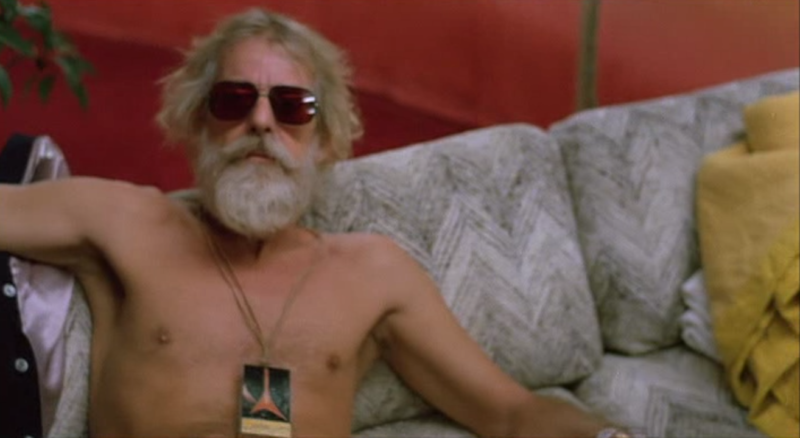 Hal Ashby’s cameo appears during these lyrics: ‘Nobody will know, when you’re old. When you’re old, nobody will know.’
Hal Ashby’s cameo appears during these lyrics: ‘Nobody will know, when you’re old. When you’re old, nobody will know.’
Re: Stones 1981-1982 Wardrobes
Posted by:
Stoneage
()
Date: December 28, 2017 02:46
Maybe they should have used a different director? I don't think LSTNT was a particularly good movie or live recording.
Even the sound recording was poor. I would pick Hampton any day over it. And that was "only" a ppv recording...
Even the sound recording was poor. I would pick Hampton any day over it. And that was "only" a ppv recording...
Re: Stones 1981-1982 Wardrobes
Posted by:
Stoneage
()
Date: December 28, 2017 02:48
...and by the way: Thanks for this excellent 81/82 thread, Exilstones!
Re: Stones 1981-1982 Wardrobes
Posted by:
Mathijs
()
Date: December 29, 2017 12:55
Quote
tomk
Always wondered why they had the really thin guitar cables for the wireless.
Most likely because they are all hand soldered, and the thinner wire works easier.
Mathijs
Re: Stones 1981-1982 Wardrobes
Posted by:
exilestones
()
Date: December 31, 2017 01:27
LET'S SPEND THE NIGHT TOGETHER


While the definitive film about The Rolling Stones is still waiting to be made, there have been many worthwhile attempts along the way to capture the band's mystique by various filmmakers such as the 1966 documentary Charlie Is My Darling by Peter Whitehead, Robert Frank's banned 1972 exposé C*cksucker Blues, and Gimme Shelter (1970), Albert and David Maysles' dark, compelling chronicle of the disastrous 1969 Altamont concert as the Stones looked on while their Hell's Angels security force beat up festival attendees, knifing one of them to death. Let's Spend the Night Together (1983), on the other hand, was a planned collaboration between Mick Jagger and director Hal Ashby, whose intent was to capture the live experience of the Stones in concert on an audio and visual level not previously attempted in a feature film about the band.
The idea for the film emerged during a meeting between Jagger and Ashby at a Rolling Stones concert at the Los Angeles Coliseum. Jagger had some very specific ideas about capturing the excitement of their upcoming tour in support of the album "Tattoo You" and he wanted Ashby's recommendations for possible directors to helm it. Ashby volunteered his own services, which Jagger happily agreed to, and for the director it was a chance to do something different and fun. It was also a welcome distraction from the frustrations of studio interference he was currently experiencing on his production of Lookin' to Get Out(1982), that indirectly resulted in Ashby being denied the opportunity to direct Tootsie (1982) on which he had already spent considerable pre-production time.
Less than a month after Jagger proposed the as-yet-untitled concert film (Time Is on Our Side was an early title suggestion), Ashby began filming the Rolling Stones in concert, first at the Brendan Byrne Arena in Meadowlands, New Jersey. The best footage, however, was captured at the Sun Devil Stadium in Tempe, Arizona where Ashby ended up directing from a gurney while hooked up to an IV (there are conflicting reports of whether Ashby had almost overdosed from partying too hard or if he had suffered a minor heart attack). For this particular concert Ashby had a twenty camera set-up, one of them placed in a helicopter to capture aerial shots, and his cinematographer team was headed by Caleb Deschanel, Gerald Feil and Garrett Brown, who produced a visually stunning look for the film. Jagger remarked during the editing process that, "There was this really beautiful backdrop of desert and mountains and we had 70,000 people...We filmed it so that you see me singing in front of lots of bright colors, like a painting really, but a helicopter pulls the camera back and you see I'm actually performing in front of a gigantic guitar. I just saw a rough cut of the scene, and to tell you the truth I hadn't thought it would film as spectacular as it does."
As Jagger was the main initiator of the project, it's no surprise that he also emerges as the real star of Let's Spend the Night Together; the other members of the band were less enthusiastic about the presence of the filmmakers - Keith Richards got so annoyed at one point that he almost started a fistfight with one of the cinematographers - but all of the musicians are captured in both intimate and live concert moments which effectively convey why this band is one of the most enduring and popular of all rock bands. Among the musical highlights are Jagger dancing on stage with a female chorus that includes his girlfriend Jerry Hall during "Honky Tonk Women," a raucous "Jumpin' Jack Flash" with Mick being lifted in the air by a hydraulic cherry picker and a high energy version of "Under My Thumb" which effectively uses some of the aforementioned helicopter aerial shots.
Marketing expert Mike Kaplan, a trusted colleague of Ashby, compared Let's Spend the Night Together to Woodstock(1970) and added that, "If The Last Waltz [1978] grossed $5 million, and it wasn't a very good movie, we could gross at least that." Yet, despite finding a European distributor for the film when a rough cut of it was screened at the Cannes film festival, Ashby's concert film was a harder sell in America. The director also wanted to reedit the film for its domestic release - it was released in Germany, Switzerland and Austria under the title Rocks Off! - and distribute as a big screen audio/visual event in the style of an IMAX presentation. "I want to do a road show kind of thing," Ashby explained, "because the film has got a lot of energy in it. Every time I screen it people come up to me afterwards and say, 'My God!' so I want to take a 70mm, six-channel stereo print and put it up where people can have some fun. I want to screen it where people can get up and dance"(from Being Hal Ashby: Life of a Hollywood Rebel by Nick Dawson).
Eventually a distribution deal was worked out with Embassy Pictures and a few selected theatres actually exhibited a 70mm print with six-track sound of Let's Spend the Night Togetherbut the film was mostly seen in a 35mm version during its brief release. Critical response was mostly positive with Janet Maslin of The New York Times calling it "probably the handsomest rock-and-roll movie ever made," and Variety labeling it "a solid, technically sophisticated concert pic." Some critics were disappointed such as Roger Ebert who wrote that Let's Spend the Night Together is "essentially a concert film - a film recording an "ideal" Rolling Stones concert, put together out of footage shot at several outdoor and indoor Stones concerts. If that's what you want, enjoy this movie. I wanted more." Some also cited the concert movie's less effective moments such as the Rolling Stones' live performance of "Time Is on Our Side" as archival footage of the Rolling Stones in younger days and turbulent sixties newsreel clips play over the music in a self-conscious stylistic device that detracts from the concert experience on screen. Still, as a lavish cinematic record of the Stones' "Tattoo You" tour, the movie succeeds beyond expectation and should please fans of the band. Jagger, in particular, was quite happy with the results, calling it, "a much bigger, more accurate, interesting view of the concert than we'd had before in any film." Unfortunately, Let's Spend the Night Together was not a box office success and concert films have consistently proven to be unlikely box office hits with the occasional rare exception like Woodstock. Nevertheless, Ashby's rare venture into the concert film genre remains an intriguing detour during his beleaguered career in the early eighties.

Producer: Ronald L. Schwary
Director: Hal Ashby
Cinematography: Caleb Deschanel, Gerald Feil
Film Editing: Lisa Day
Cast: Mick Jagger, Keith Richards, Charlie Watts, Bill Wyman, Ron Wood, Ian Stewart, Ian McLagan, Ernie Watts, Bobby Keys.
C-95m.
SOURCES:
Being Hal Ashby: Life of a Hollywood Rebel by Nick Dawson (University Press of Kentucky)
IMDB
by Jeff Stafford


While the definitive film about The Rolling Stones is still waiting to be made, there have been many worthwhile attempts along the way to capture the band's mystique by various filmmakers such as the 1966 documentary Charlie Is My Darling by Peter Whitehead, Robert Frank's banned 1972 exposé C*cksucker Blues, and Gimme Shelter (1970), Albert and David Maysles' dark, compelling chronicle of the disastrous 1969 Altamont concert as the Stones looked on while their Hell's Angels security force beat up festival attendees, knifing one of them to death. Let's Spend the Night Together (1983), on the other hand, was a planned collaboration between Mick Jagger and director Hal Ashby, whose intent was to capture the live experience of the Stones in concert on an audio and visual level not previously attempted in a feature film about the band.
The idea for the film emerged during a meeting between Jagger and Ashby at a Rolling Stones concert at the Los Angeles Coliseum. Jagger had some very specific ideas about capturing the excitement of their upcoming tour in support of the album "Tattoo You" and he wanted Ashby's recommendations for possible directors to helm it. Ashby volunteered his own services, which Jagger happily agreed to, and for the director it was a chance to do something different and fun. It was also a welcome distraction from the frustrations of studio interference he was currently experiencing on his production of Lookin' to Get Out(1982), that indirectly resulted in Ashby being denied the opportunity to direct Tootsie (1982) on which he had already spent considerable pre-production time.
Less than a month after Jagger proposed the as-yet-untitled concert film (Time Is on Our Side was an early title suggestion), Ashby began filming the Rolling Stones in concert, first at the Brendan Byrne Arena in Meadowlands, New Jersey. The best footage, however, was captured at the Sun Devil Stadium in Tempe, Arizona where Ashby ended up directing from a gurney while hooked up to an IV (there are conflicting reports of whether Ashby had almost overdosed from partying too hard or if he had suffered a minor heart attack). For this particular concert Ashby had a twenty camera set-up, one of them placed in a helicopter to capture aerial shots, and his cinematographer team was headed by Caleb Deschanel, Gerald Feil and Garrett Brown, who produced a visually stunning look for the film. Jagger remarked during the editing process that, "There was this really beautiful backdrop of desert and mountains and we had 70,000 people...We filmed it so that you see me singing in front of lots of bright colors, like a painting really, but a helicopter pulls the camera back and you see I'm actually performing in front of a gigantic guitar. I just saw a rough cut of the scene, and to tell you the truth I hadn't thought it would film as spectacular as it does."
As Jagger was the main initiator of the project, it's no surprise that he also emerges as the real star of Let's Spend the Night Together; the other members of the band were less enthusiastic about the presence of the filmmakers - Keith Richards got so annoyed at one point that he almost started a fistfight with one of the cinematographers - but all of the musicians are captured in both intimate and live concert moments which effectively convey why this band is one of the most enduring and popular of all rock bands. Among the musical highlights are Jagger dancing on stage with a female chorus that includes his girlfriend Jerry Hall during "Honky Tonk Women," a raucous "Jumpin' Jack Flash" with Mick being lifted in the air by a hydraulic cherry picker and a high energy version of "Under My Thumb" which effectively uses some of the aforementioned helicopter aerial shots.
Marketing expert Mike Kaplan, a trusted colleague of Ashby, compared Let's Spend the Night Together to Woodstock(1970) and added that, "If The Last Waltz [1978] grossed $5 million, and it wasn't a very good movie, we could gross at least that." Yet, despite finding a European distributor for the film when a rough cut of it was screened at the Cannes film festival, Ashby's concert film was a harder sell in America. The director also wanted to reedit the film for its domestic release - it was released in Germany, Switzerland and Austria under the title Rocks Off! - and distribute as a big screen audio/visual event in the style of an IMAX presentation. "I want to do a road show kind of thing," Ashby explained, "because the film has got a lot of energy in it. Every time I screen it people come up to me afterwards and say, 'My God!' so I want to take a 70mm, six-channel stereo print and put it up where people can have some fun. I want to screen it where people can get up and dance"(from Being Hal Ashby: Life of a Hollywood Rebel by Nick Dawson).
Eventually a distribution deal was worked out with Embassy Pictures and a few selected theatres actually exhibited a 70mm print with six-track sound of Let's Spend the Night Togetherbut the film was mostly seen in a 35mm version during its brief release. Critical response was mostly positive with Janet Maslin of The New York Times calling it "probably the handsomest rock-and-roll movie ever made," and Variety labeling it "a solid, technically sophisticated concert pic." Some critics were disappointed such as Roger Ebert who wrote that Let's Spend the Night Together is "essentially a concert film - a film recording an "ideal" Rolling Stones concert, put together out of footage shot at several outdoor and indoor Stones concerts. If that's what you want, enjoy this movie. I wanted more." Some also cited the concert movie's less effective moments such as the Rolling Stones' live performance of "Time Is on Our Side" as archival footage of the Rolling Stones in younger days and turbulent sixties newsreel clips play over the music in a self-conscious stylistic device that detracts from the concert experience on screen. Still, as a lavish cinematic record of the Stones' "Tattoo You" tour, the movie succeeds beyond expectation and should please fans of the band. Jagger, in particular, was quite happy with the results, calling it, "a much bigger, more accurate, interesting view of the concert than we'd had before in any film." Unfortunately, Let's Spend the Night Together was not a box office success and concert films have consistently proven to be unlikely box office hits with the occasional rare exception like Woodstock. Nevertheless, Ashby's rare venture into the concert film genre remains an intriguing detour during his beleaguered career in the early eighties.

Producer: Ronald L. Schwary
Director: Hal Ashby
Cinematography: Caleb Deschanel, Gerald Feil
Film Editing: Lisa Day
Cast: Mick Jagger, Keith Richards, Charlie Watts, Bill Wyman, Ron Wood, Ian Stewart, Ian McLagan, Ernie Watts, Bobby Keys.
C-95m.
SOURCES:
Being Hal Ashby: Life of a Hollywood Rebel by Nick Dawson (University Press of Kentucky)
IMDB
Sorry, only registered users may post in this forum.
Online Users
Guests:
1870
Record Number of Users:
206
on June 1, 2022 23:50
Record Number of Guests:
9627
on January 2, 2024 23:10
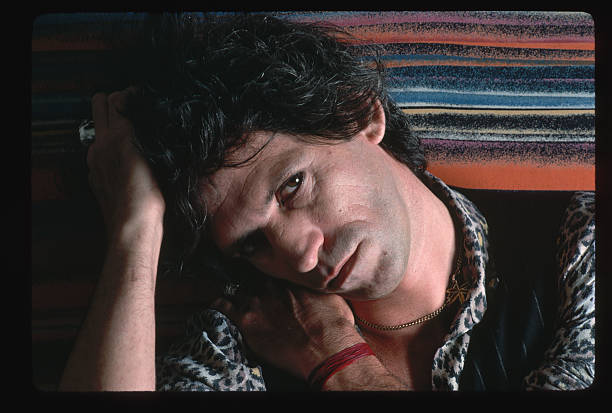







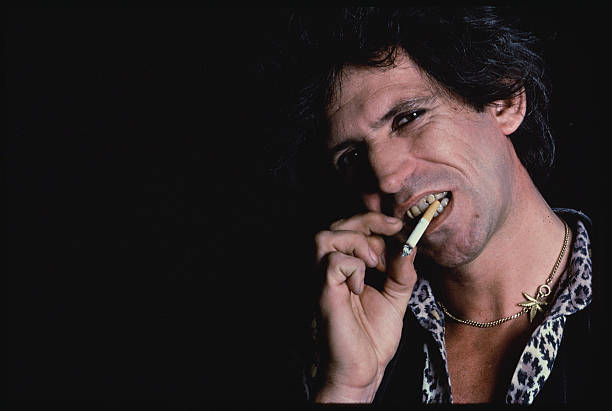
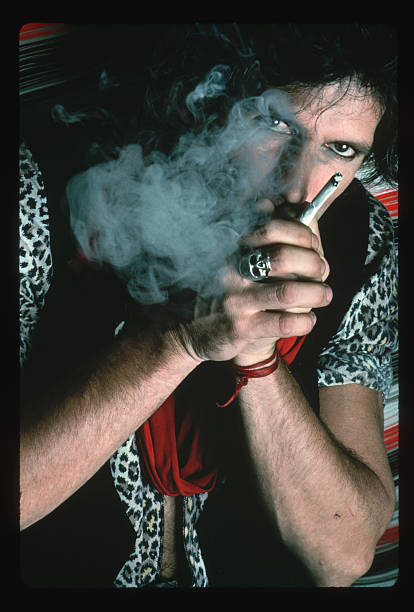


%2C445%2C286%2C400%2C400%2Carial%2C12%2C4%2C0%2C0%2C5_SCLZZZZZZZ_.jpg)
